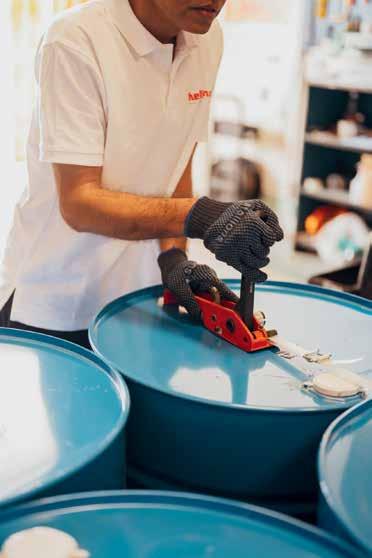




With a complete line-up of AWD and PWD versions and the the 16-speed HI-TRONIX automated gearbox, the IVECO T-WAY features a host of functionalities such as Rocking Mode, Off-road Mode, Creeping Mode and 4 reverse gears to tackle with ease the toughest off-road conditions. The new architecture of the EBS system, combined with disc brakes on all wheels, greatly improves the vehicle’s performance and the driver’s safety in the most demanding applications.
The new IVECO S-WAY, with a completely redesigned and reinforced cab, offers a wide choice of Euro III/V diesel engines, a delivering class-leading power from 360 HP to 560 HP Euro III / 570 HP Euro V and superior fuel-saving devices, such as anti-idling feature, Ecoswitch, Ecoroll and Smart Alternator, 12-speed HI-TRONIX automated transmission with the most advanced technology in its category, electronic clutch and best-in-class torque-to-weight ratio.

SIGNATURE MEDIA FZ LLE
P. O. Box 49784, Dubai, UAE Tel: 04 3795678
Email: info@signaturemediame.com
Exclusive Sales Agent Signature Media LLC
P.O. Box 49784, Dubai, UAE
Publisher: Jason Verhoven jason@signaturemediame.com
Editor: Malcolm Dias malcolm@signaturemediame.com
Art Director: Johnson Machado johnson@signaturemediame.com
Production Manager: Roy Varghese roy@signaturemediame.com
According to a study entitled ‘The case for hydrogen as a replacement for fossil fuels by the Blavatnik School of Government, University of Oxford, Hydrogen (H2) can play a key role in decarbonising the world economy in the next 15 years, giving a real chance to keep global warming close to the threshold of 2 degrees Celsius.
H2 obtained from solar energy can become a major source of heat for households and industry, also helping move cars, trucks, and ships, henceforth dealing with some of the biggest sources of CO2 emission. This combination seems today among the most promising paths to replace fossil fuels in a scale and time frame to make a real difference to global warming. However, what would take for this transition, and what would it imply?
The good news about H2 and associated products is that they can be produced using solar energy and water, and they can be deployed largely by adapting existing infrastructures and business networks. So, H2 can be a disruptive technology with few losers, and, ensuring adequate care, little inconvenience to end users. It can also create new trade streams with important benefits for some among those most vulnerable to climate change.
Printed by United Printing Press (UPP) – Abu Dhabi
Distributed by Tawseel Distribution & Logistics – Dubai

So, can hydrogen be the next viable fuel? In this current September 2023 edition of Global Supply Chain, we take an in-depth view of hydrogen development as an alternative option by the GCC states. Additionally, we have also presented ‘The Hydrogen Agenda—Pathways to Decarbonization—An Outlook researched and presented by Frost & Sullivan.
In this edition we also examine the newly forged strategic partnership between Addverb and Logsquare; an article on the vexatious subject of Reverse Logistics, multiple Thought Leadership and Opinion Editorials by eminent industry professionals. Read on!
The logistics and supply chain industry across the globe and notably the Middle East is volatile and at the crossroads; and we will continue to work hard to bring you to current on developments, reports, features, one-onone interviews, on a wide range of interesting and related subjects both in our flagship monthly print-digital publication, Global Supply Chain, and also on our web portal www.globalsupplychainme.com
Contributor’s opinions do not necessarily reflect those of the publisher or editor and while every precaution has been taken to ensure that the information contained in this magazine is accurate and timely, no liability is accepted by them for errors or omissions, however caused.
Articles and information contained in this publication are the copyright of Signature Media FZ LLE & SIGNATURE MEDIA LLC and cannot be reproduced in any form without written permission.
Add to this our regular repertoire of the latest news, topical features, profiles, business analyses, professional contributions, Opinion-Editorials, and useful content all of which are well encapsulated and meticulously curated to make for stimulating reading!
Happy reading!
Malcolm Dias Editor


Almajdouie Logistics presents an array of storage options strategically situated across Saudi Arabia. Our modern warehouses are thoughtfully designed to cater to a spectrum of storage needs, including dry, ambient, chilled, and frozen storage.
At the core of our warehouses lies a fusion of state-of-the-art technology and global standards, resulting in an end-to-end service. Almajdouie Logistics empowers you with superior command over the entire logistics process, guided by end-to-end services and executed by a proficient workforce. Our unwavering commitment to safety, punctual deliveries, exceptional client care, and a user-friendly dashboard for real-time stock visibility sets us apart.
06Hydrogen—Al Majdouie Logistics
Promoting the usage of hydrogen in Saudi Arabia.
12Hydrogen—Oman showing the way
The Government of the Sultanate has ambitious plans for gas development.
16The Hydrogen Agenda
An expansive report on the viability of the gas in the GCC—Frost & Sullivan.
20ADDVERB-Logsquare Strategic Partnership.
22Shipsy
An exclusive interview with Harsh Kumar, CSO.
25Al Masaood Group—Abu Dhabi
A news roundup
26Reverse Logistics
Yango initiates a smart way forward for Reverse Logistics.
28Artificial Intelligence
OpEd by Joshua Goldfarb, Security & Fraud architect, F5.
30Omnichannel Logistics
OpEd by Dr. Shereen Nassar, Heriot-Watt University Dubai.
32Global Forwarding Outlook 2023
OpEd by Eelco Dijkstra, Founder-CEO, Europhia Consulting.
34Automation & Materials Handling
OpEd by Rami Younes, General Manager, Swisslog Middle East.

36Supply Chain Transparency
OpEd by Hasneen Sheela Shereef, TCS.
38Electric VTOL
Exclusive interview with Mark Robert Henning, Managing Director, AutoFlight Europe.
42GAC
A report on GAC Dubai-Jebel Ali
46 News
Up to date news of the Global Suppy Chain industry
Renault Trucks introducing the 1st heavy truck
100% electric
Renault Trucks introducing the 1st heavy truck
Renault Trucks introducing the 1st heavy truck 100% electric
100% electric
In support of the UAE’s net-zero ambitions
Renault Trucks Middle East and Al Masaood launched the first 100% electric refuse collector truck in the United Arab Emirates.
In support of the UAE’s net-zero ambitions
Renault Trucks Middle East and Al Masaood launched the first 100% electric refuse collector truck in the United Arab Emirates.
In support of the UAE’s net-zero ambitions
Renault Trucks Middle East and Al Masaood launched the first 100% electric refuse collector truck in the United Arab Emirates.
The first fully electric heavy truck launched in the Middle East.
The first fully electric heavy truck launched in the Middle East.
The first fully electric heavy truck launched in the Middle East.
The Renault Trucks D Wide 26t E-Tech Electric is the ideal vehicle for urban waste collection with low operating costs while maintaining optimal range and payload.
The Renault Trucks D Wide 26t E-Tech Electric is the ideal vehicle for urban waste collection with low operating costs while maintaining optimal range and payload.
Equipped with 23m3 Gorica-Farid electric refuse collector, this 100% electric Renault Trucks E-Tech D Wide P6x2 will be operating on Abu Dhabi roads, almost silently with zero tailpipe emissions.
The Renault Trucks D Wide 26t E-Tech Electric is the ideal vehicle for urban waste collection with low operating costs while maintaining optimal range and payload.
Equipped with 23m3 Gorica-Farid electric refuse collector, this 100% electric Renault Trucks E-Tech D Wide P6x2 will be operating on Abu Dhabi roads, almost silently with zero tailpipe emissions.
Equipped with 23m3 Gorica-Farid electric refuse collector, this 100% electric Renault Trucks E-Tech D Wide P6x2 will be operating on Abu Dhabi roads, almost silently with zero tailpipe emissions.
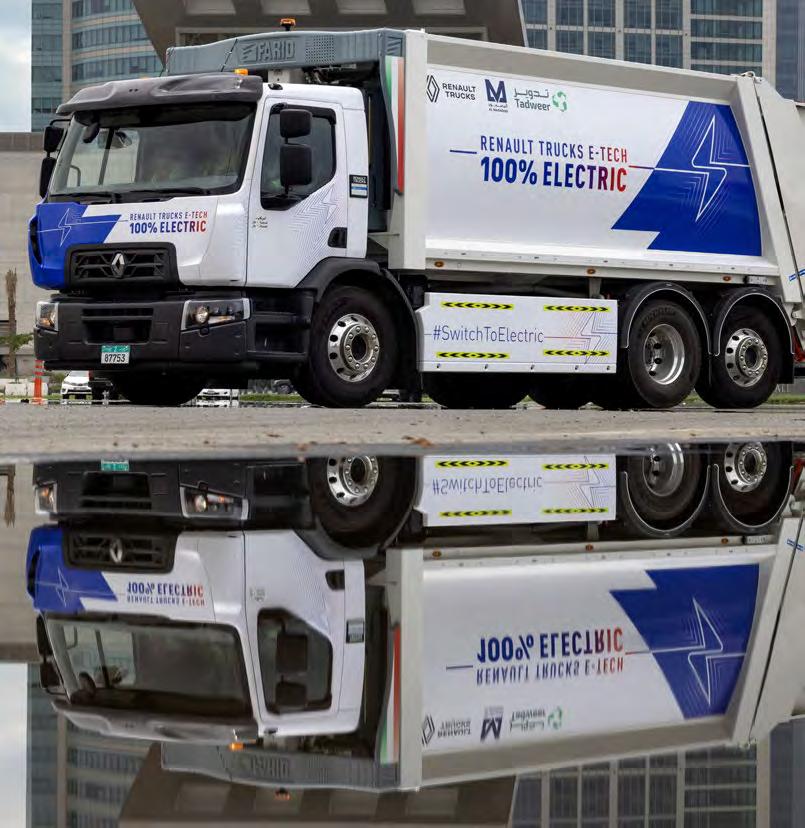

Carbon-free hydrogen is increasingly being endorsed as the viable alternative to fossil fuels
Energy analysts believe GCC Governments are increasingly perceiving hydrogen more as a means of economic diversification rather than a central part of its domestic green energy transition plan, which will be primarily met by solar power and non-fossil fuels. As part of an updated national energy strategy, the blueprint for hydrogen is to turn the GCC into a leading and reliable producer and supplier of low-carbon hydrogen by the end of this decade.
Business consultancy Frost & Sullivan published a report in January 2023, saying hydrogen ‘is expected to play a key role in decarbonising the economy across end-use sectors in the GCC’.
It added that GCC countries, especially the UAE, Saudi Arabia, and Oman, are working on national strategies aimed at developing the hydrogen market in the region and positioning themselves as future hydrogen exporters.
In Saudi Arabia, around US$ 8.5bn is being invested to build the world’s largest production facility for green hydrogen – hydrogen that is produced on a carbonneutral basis through the electrolysis of water.
The Neom Green Hydrogen Project is being developed by Neom Green Hydrogen Company, a joint venture between ACWA Power, Air Products and Neom. It is expected that the plant will start producing green hydrogen from 100 percent renewable energy sources in 2026.
The UAE will play an important role in exporting hydrogen to energy-hungry countries that lack the space or infrastructure,
it was revealed in a recently unveiled ‘National Hydrogen Strategy’.
Oman, meanwhile, is on track to become the sixth-largest hydrogen exporter in the world and the largest in the Middle East by 2030, according to the International Energy Agency. The Sultanate aims to produce at least 1 million tonnes of renewable hydrogen a year by the end of the decade, up to 3.75MT by 2040 and up to 8.5MT by 2050.
Hydrom, a subsidiary of state-owned Energy Development Oman, recently signed agreements worth US$ 10bn to develop two green hydrogen projects.

The global hydrogen production market was valued at US$ 130bn in 2021, according to the World Bank, and is estimated to grow by up to 9.2 per cent per year through 2030. GCC members have several competitive advantages that could help them in the global green hydrogen economy, including their solar and wind resources, financial muscle, and export networks.
While the UAE, Saudi Arabia and Oman are making significant moves, Qatar is continuing to focus on LNG and overseas production of blue hydrogen. Kuwait and Bahrain remain cautious and are sticking to investments and feasibility studies.

In her research paper entitled: “The Rise of Hydrogen: Fuelling a Green Revolution”. Valentina Olabi, Economic Research Specialist, GPCA (Gulf Petrochemicals & Chemicals Association), Valentina explains how hydrogen has now propelled into the spotlight as the promising solution to decarbonizing various sectors, including transport and energy generation.
Owing to its zero-emissions nature, hydrogen holds the potential to entirely transform both the GCC and global energy economy. The GCC is also well-equipped to pioneer this economy, because of comparative advantages such as abundance in renewables and strategic locations for hydrogen storage and exports.
Despite this, the realization of hydrogen’s potential still requires the addressing of numerous challenges, including the crucial role of supply chains in fostering the widescale commercialization of hydrogen. Presently, hydrogen is produced either via electrolysis or steam methane reforming (SMR). However, these methods still face various challenges, particularly with regards to cost and scaling-up.
Hydrogen production currently costs US$ 5 per kg and must fall to US$ 1.50 per kg to compete against conventional (grey) hydrogen. Aside from cost, scaling up hydrogen production to the quantities required to replace grey hydrogen is another major challenge.

In view of these challenges, the importance of solid supply chains is a crucial component towards the successful commercialization of hydrogen. An efficient supply chain ensures the smooth movement in all hydrogen: products and derivatives—production, transport, storage and end-use, while also creating a value chain along the way that attracts further investment.
Economics aside, a solid hydrogen supply
chain also considers environmental benefits. For example, for green hydrogen, ensuring a smooth operation from renewable energy to electrolysers would enable hydrogen production with zero emissions, making it a fully clean option.
This article explores hydrogen’s potential in the GCC, focusing on regional market potential and the comparative advantages the region has to be able to pioneer the hydrogen economy. The article also addresses the challenges currently hindering widescale hydrogen implementation in the region, as well as the role of supply chains in addressing these challenges.
GCC countries and producers are heavily investing in the hydrogen economy, as clean energy is a key component towards GCC countries hitting their 2030 and 2050 decarbonisation targets. Despite still being in the start-up phase, the GCC has various comparative advantages to develop hydrogen globally.
Regional collaboration and government intervention are the two primary ways to address weaknesses and threats hindering a GCC hydrogen economy. It is important to note that regional collaboration between GCC members is in any case crucial for a maximised hydrogen supply chain.
For instance, Oman has the highest regional wind speed, as well as strategic
export locations through Duqm port, but geologically is very mountainous, making it inadequate to store hydrogen.
As such, a regional collaborative effort is required- for example, Kuwait stores the hydrogen that can be exported through Oman and Saudi Arabia. Research suggests that the GCC is projected to deploy between 100-140 GW of electricity produced using hydrogen per decade from 2030 onwards if targets are met.
Such a deployment could lead to substantial revenues for the GCC. Based on Europe and Asia’s demands, if the GCC were to even supply these regions with half of their expected (total) demand, the GCC’s revenue per market could reach up to US$ 200bn.
From a potentiality perspective, the GCC hydrogen market looks very promising, and in theory has the ability to dominate the global market. However, significant R&D, government intervention and regional collaboration is required for such a GCC hydrogen market to be feasible.
why is this attractive? Aside from being used to generate electricity, power and heat, hydrogen fuel cells are also rapidly gaining popularity as an option for commercial trucks. Road transport currently contributes to approx. 69% of total GCC carbon dioxide emissions (Frost & Sullivan, 2023), with heavy-duty commercial trucks contributing to this number.
Hydrogen fuel cell trucks are attractive because they present a total zero-emission solution, as the only by product when generating electricity is water vapour. This makes the prospect of hydrogen trucks very attractive to the transport sector, as it can both reduce carbon footprint and improve air quality.
Another promising feature of hydrogen trucks is fast refuelling times. Like conventional diesel trucks, hydrogen trucks can be refuelled quickly. According to Volvo, the driving range of a fuel cell truck can be up to 1,000 km, and refuelling can be done in less than 15 minutes. This reduces downtime and increases the operational efficiency of commercial truck fleets.
With increasing pressure on producers to adopt sustainable practices, hydrogen fuel cell trucks offer a very promising solution towards decarbonization and a green economy. Nonetheless, their operation is still at the novel phases, and requires major infrastructural development and R&D to be able to replace diesel trucks and be fully commercialized.
The infrastructural challenges associated with hydrogen are one of the primary challenges preventing its widescale implementation. This is where the role of substantiating infrastructural development and a smooth regional supply chain becomes crucial. The key infrastructures required are as follows:
Production: scaling-up production to meet growing demand and compete with grey hydrogen is one of the main challenges. This can be addressed through establishing large-scale production facilities, including electrolysis plants.
However, this requires tremendous technological advancements, which requires extensive investment and R&D from both producers and government bodies alike. For hydrogen production to be possible, producers should enhance solar and wind projects in the region, incorporate regulatory policies (carbon tax for example), and continue developing electrolysis technologies to make them more cost-effective.
Storage and Transport Infrastructure: the challenge of hydrogen storage and transport is the primary reason for which widescale implementation hasn’t yet occurred. Although the GCC has various geological advantages, including flat land suitable to build salt caverns that can be effective for storing hydrogen, an efficient storage and transportation network that involves pipelines, storage tanks, and transportation vessels, is crucial to ensure the reliable supply and distribution of hydrogen.
Investments: Addressing issues related to hydrogen usage requires extensive R&D and investment. This includes advancements in high pressure and cryogenic storage systems, as well as the development of innovative materials and methods for efficient and safe hydrogen storage. GCC producers should collaborate with research institutions and technology developers to accelerate progress in this area.
Regional Collaboration: As previously mentioned, the most maximized GCC supply chain is one that stretches out across all members, as some member countries have comparative advantages that others don’t have and vice vera. Fostering collaboration among GCC countries to facilitate the sharing of hydrogen storage and transport infrastructure can help overcome resource constraints and both store and export hydrogen from the most ideal locations.
Refuelling Infrastructure: specific to hydrogen trucks, another key challenge is the establishment of a widespread refuelling infrastructure network. Building hydrogen refuelling stations requires substantial investment and cooperation among all stakeholders. This can be addressed by encouraging collaboration between government bodies and the private sector to invest in the development of hydrogen refuelling stations-.for example.
Saudi’s Air Products Company is building the country’s first refuelling station in
Neom. Collaboration can be encouraged by providing subsidies or grants to attract private investors and accelerate the expansion of refuelling infrastructure.
Safety Measures and Regulations: Ensuring the safe handling, storage, and transportation of hydrogen is crucial; hydrogen is highly flammable and has specific safety considerations that require attention.
To ensure safety, proper access to and use of safety equipment such as gas detectors is crucial when installing any hydrogen refuelling facility. This equipment can help detect and control potential hazards in the event of a hydrogen-related incident.
Overall, hydrogen presents itself as a very prospective candidate to reduce emissions and enable long-range transportation. However, as a shift towards green hydrogen is becoming more imminent, advancements in all areas of the hydrogen supply chain and improved safety regulations are required to make the transition feasible.
The GCC possesses all the necessary resources to be a pioneer in the hydrogen economy. With their abundant renewable resources and regional decarbonization commitments, GCC countries are wellpositioned to lead the way in hydrogen commercialization.
With the right regional supply chain in place that emphasizes interconnectedness, and R&D advancements to address the entire hydrogen economy from production to enduse, there is immense potential for the GCC to dominate the global market.

However, collaboration between all stakeholders (producers, governments, regulators, academia, and other stake holders) plays a vital role in seamlessly maximizing each stage of the hydrogen supply chain and harmonizing safety regulations.
Once these challenges are successfully addressed, the GCC will undoubtedly emerge as global frontrunners in the transition towards sustainability. Moreover, their comparative advantages in hydrogen production compared to other regions will position them as a significant player in the export market, offering substantial opportunities for hydrogen trade.
Almajdouie Logistics is striving to have a responsible role to meet the Kingdom’s vision of 2030 and net zero target of 2060. It also makes the case for taking a big step into the future with the revolutionary hydrogenpowered Hyundai XCIENT Fuel Cell Truck, available exclusively from Almajdouie Motors in the Kingdom of Saudi Arabia.
Hydrogen is clean, safe, and renewable, making it the perfect solution for trucking and sustainable, zero-emissions mobility, so your business can reach its ESG targets.
The XCIENT Fuel Cell has a driving range of 400km on a single charge and customers can choose from 4X2 or 6X2 models that best suit their business.
According to Faisal, the XCIENT Fuel Cell Truck offers operational efficiency. Other advantages include the following:
Minimal downtime: XCIENT Fuel Cell can travel a long distance with a short refueling time, providing efficiency and flexibility.
Lighter weight: The lighter cabin weight means that you can carry more per trip.
Faisal explained that the XCIENT Fuel Cell Truck is one of the first to see the potential of hydrogen as an alternative energy which can replace fossil fuels for a more sustainable future.
It represents the 100% zero-emission on a wellto-wheel basis where the hydrogen is produced from renewable energy. He affirms that a new chapter of Xcient Fuel Cell, the future of logistics without environmental pollution, starts now.
With Hydrogen looking to become a key zero-emissions fuel for the commercial sector going forward, Hyundai is ramping up its efforts both in KSA and the region.

Faisal further asserted that Almajdouie have taken stringent measures to decarbonize with green Hydrogen and it doesn’t stop there. In fact, they have also gone a step ahead with the introduction of working with tyre companies using 100% recycled tyres with partner companies who are global players.

They have also gone further with engine parts and hoses that will be recycled 100% of the time to assist as per the Geneva Convention and the KSA Accord in 2060.
With Saudi Arabia as its main market, Faisal also stated that Al Majdouie has a modern fleet and ensures success in all their operations for Government assignments with mega corporate bigwigs such as Sabic and Aramco to name a few.
Following the directives, initiatives, and regulations from the Government to meet the Kingdom’s vision, Al Majdouie Group uses relatively new trucks and vehicles for all their contracted work around the Kingdom.
Faisal Nadeem, Transportation General Manager stated that Almajdouie Logistics makes the case for taking a big step into the future with the revolutionary hydrogen-powered Hyundai XCIENT Fuel Cell Truck, available exclusively from Almajdouie Motors in the Kingdom of Saudi Arabia.
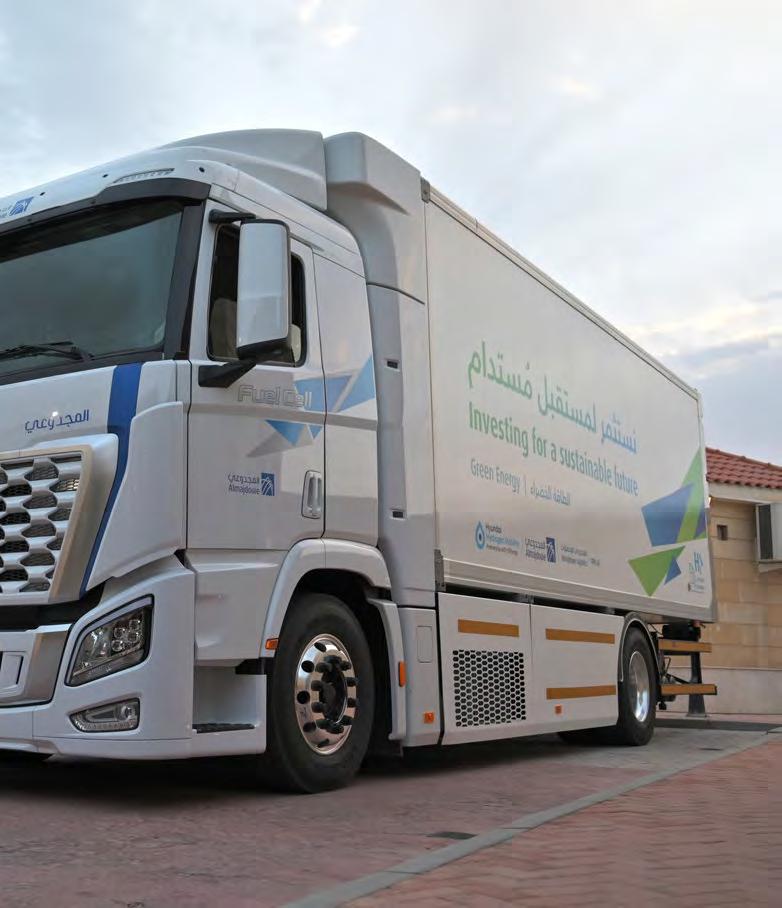
Oman is dedicating an area the size of Slovakia to solar power projects to produce green hydrogen, reports Jonathan Gorvett, a reporter for AGBI, a new London-headquartered media platform that provides intelligence and analysis around the Middle East’s commercial opportunities and challenges.
Sometimes it takes a country. The Sultanate of Oman is dedicating an area the size of Slovakia to solar power projects to produce green hydrogen, gas produced entirely from renewable sources.
On June 1 of this year, Salim Bin Nasser Al Audi, the Omani Minister of Energy and Minerals, signed US$ 20bn of contracts with partners including BP, Shell and the newly formed Hydrogen Oman (Hydrom) to produce 500,000 tonnes of green hydrogen annually.
Later in July 2023, Hydrom announced that ‘solidified commitments’ to initiatives in the Sultanate had risen to US$ 30bn. Production targets are 1mn tonnes by 2030, 3.75mn tonnes by 2040 and 8.5mn tonnes by 2050. This should make the Sultanate the world’s sixth largest exporter of hydrogen by 2030.
By 2040, those exports are projected to be worth 80 percent of Oman’s current exports of liquefied natural gas (LNG), according to the International Energy Agency. By 2050 they may be worth twice as much as the sultanate’s current overseas LNG sales.
Yet hydrogen is not without challenges. Technical issues limit long-distance transportation of the gas, while regulations and international markets are also still being worked. Hydrom signs its first deals. Oman has set bold targets to develop green hydrogen facilities.
Other Gulf nations are taking different path while Oman is focusing on green, the UAE is supporting blue, pink and green hydrogen.
SAUDI ARABIA has taken a similar approach. Both are also investing in developing domestic industrial uses of hydrogen to produce commodities such as green steel, mitigating the challenge of exporting the gas.
QATAR is largely outsourcing hydrogen production, continuing to ship its LNG to destinations where, if the off-taker desires, it can be used to produce blue hydrogen.
The Hydrogen Rainbow Green hydrogen is the term used to describe hydrogen that is produced on a carbon dioxide-neutral basis through the electrolysis of water. Turquoise hydrogen is created by a thermal process in which natural gas is broken down with the help of methane
pyrolysis into hydrogen and solid carbon. Blue hydrogen is generated from the steam reduction of natural gas. Grey hydrogen is obtained by steam reforming fossil fuels such as natural gas or coal.
Sometimes other colours are ascribed to hydrogen, based on how it is produced. For red, pink and violet hydrogen, the electrolysers are driven by nuclear power. Yellow hydrogen refers to hydrogen production from a mixture of renewable energies and fossil fuels.
Hydrogen that is merely a waste product / by-product of other chemical processes is referred to as white hydrogen, while the use of coal as a fuel produces brown hydrogen.
BAHRAIN has decided that its combination of depleted wells and small land area make

Pick every item in the warehouse quickly and error-free. SSI SCHAEFER picking systems are flexible and suitable for all common product groups and goods types.
Explore the entire spectrum of systems from manual, semi automated picking and fully automated picking to harmonize and increase visibility on all your inventory movements.

Pick the perfect experience using:
Modular solutions
Advanced Goods-to-Person Pick Station
Pick by light, Pick by Voice & RF Picking
Goods-in Station
E-Pick
Automated picking
3D-Matrix Solution®
SSI Case Picking
Robotics
A-Frame Fulfilment Factory®
it more suited to carbon capture, storage and utilisation than hydrogen.
KUWAIT, meanwhile, has yet to announce a domestic hydrogen strategy, although it has invested in schemes abroad. EnerTech Holding, a Kuwaiti state-owned company, is a partner in one of the new Omani projects.
OMAN is also pursuing its own path when it comes to industry organisation. The Sultanate has offered blocks of land on which companies can build renewable energy projects. The Omani State, via Hydrom, will also hold a stake in those schemes.
Oman’s decision to go for green is partly explained by the fact that it has some of the world’s leading renewable energy resources, according to S&P. The relatively high price of the gas compared to the huge quantities of cheap renewable energy that are set to become available, plus Oman’s relatively small population and economy, means the bulk of the hydrogen generated will be for export.
(With input and credits from Reuters)
ADNOC recently announced that it has begun construction on the Middle East’s first high-speed hydrogen refuelling station. The station, which is being built in Masdar City by ADNOC, will create clean hydrogen from water, using an electrolyser powered by clean grid electricity.
Hydrogen, which creates no carbon dioxide (CO2) emissions when used, has the highest energy per mass of any fuel and can give vehicles a longer driving range and quicker refuelling times compared with battery electric vehicles.
ADNOC also announced a partnership with Toyota Motor Corporation (Toyota) and Al-Futtaim Motors to test the high-speed hydrogen refuelling station using a fleet of clean hydrogen-powered vehicles.
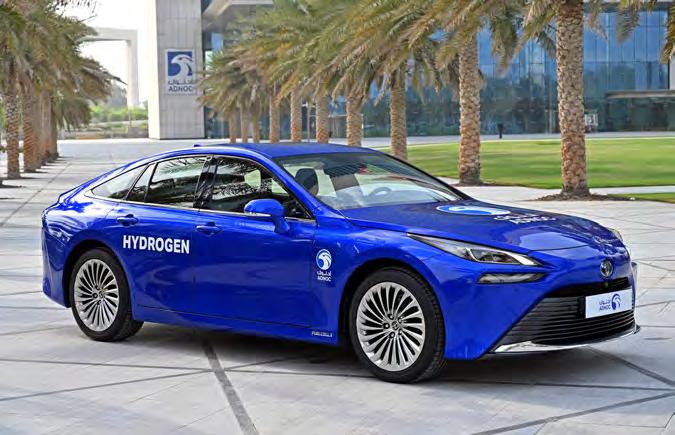
“ADNOC is placing sustainability and decarbonization at the heart of its strategy and, while we decarbonize our operations today, we are making robust investments to be a supplier of choice for the clean energies of tomorrow,” commented HE Dr Sultan Ahmed Al Jaber, Minister of Industry and Advanced Technology and ADNOC Managing Director and Group CEO.
Under the partnership, Toyota and Al Futtaim Motors will provide a fleet of hydrogen-powered vehicles. The pilot program will help ADNOC understand how hydrogen with high-speed refuelling can best be used in mobility projects to support the UAE’s National Hydrogen Strategy, which aims to position the country among the largest producers of hydrogen by 2031.
ADNOC to launch first high-speed hydrogen refuelling station in the Middle East Company is an early mover in the production of clean hydrogen
Inco Terms and Letter of Credit - UCP 600 Discounted Course Fees : AED 600/-
Scan QR Code and Avail 80% Discount
Inco Terms and Letter of Credit - UCP 600
Inco Terms and Letter of Credit - UCP 600
Associated Course Fees : AED 600/-
Associated Course Fees : AED 600/-
DGR Training in Dubai (UAE)
Scan QR Code and Avail 80% Discount
Scan QR Code and Avail 80% Discount


General Civil Aviation Authority (GCAA) & IATA
Approved CBTA DGR Training in Dubai (UAE)
General Civil Aviation Authority (GCAA) & IATA
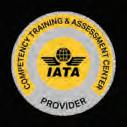

Approved CBTA DGR Training in Dubai (UAE)
Air Cargo Courses Supply Chain Courses
DANGEROUS GOODS REGULATIONS

Transportation of Lithium Battery. Live Animals Regulations (LAR).
•
Transportation of Infectious Substance.
Supply Chain Courses
Air Cargo Courses Supply Chain Courses
CILT International Diploma in Logistics and Transport. Warehousing. Inventory.
• Live Animals Regulations (LAR).
Air Cargo Operations.
• Transportation of Infectious Substance.
The International Maritime Dangerous Goods (IMDG).
Transportation of Lithium Battery. Live Animals Regulations (LAR).
• Air Cargo Operations.
Transportation Of Dangerous Goods by Roads.
Transportation of Infectious Substance.
• The International Maritime Dangerous Goods (IMDG).

Air Cargo Operations. The International Maritime Dangerous Goods (IMDG).
• Transportation of Dangerous Goods by Roads.
Transportation Of Dangerous Goods by Roads.
• CILT International Diploma in Logistics and Transport.
Passenger Transport Operations. Procurement.
• Warehousing.
• Inventory.
Freight Transport Operations. Supply Chain Operations.
Transport Planning .
• Passenger Transport Operations.
• Procurement.
CILT International Diploma in Logistics and Transport. Warehousing. Inventory.
701, Ithraa Plaza, Near Jumeirah Creekside Hotel, Garhoud, Dubai –UAE P.O. Box: 62953, Tel: +971 4 259 555 6, Email: info@atcdubai.com Website: www.atcdubai.com
• Freight Transport Operations.
• Supply Chain Operations.
• Transport Planning.
Passenger Transport Operations. Procurement.
Freight Transport Operations.
Supply Chain Operations.
Transport Planning .
Hotel, Garhoud, Dubai –UAE P.O. Box: 62953, Tel: +971 4 259 555 6, Email: info@atcdubai.com
Ithraa Plaza, Near Jumeirah

Outlook by
An Outlook researched and presented by Frost & Sullivan
Decarbonization is one of the most important factors driving the future of energy through the use of technologies that target the reduction and elimination of hydrocarbons-based fuels from the value chain. In the quest to decarbonize the economy, hydrogen has been identified as a modality that can replace as much as 10% of the total final energy consumption by 2050.
Decarbonization is one of the most important factors driving the future of energy through the use of technologies that target the reduction and elimination of hydrocarbonbased fuels from the value chain. In the quest to decarbonize the economy, hydrogen has been identified as a modality that can replace as much as 10% of the total final energy consumption by 2050.i
As of 2021, global hydrogen production has been estimated at 94 million tons of hydrogen (MT H2), with demand met primarily through fossil fuels, which accounted for more than 99% of the total production.
As of 2021, global hydrogen production has been estimated at 94 million tons of hydrogen (Mt H2), with demand met primarily through fossil fuels, which accounted for >99% of the total production.ii
Hydrogen can be produced through multiple sources and their associated technologies. Depending upon the type of production employed, a color-based classification has been assigned to differentiate between the various types of hydrogen.

the most important factors energy through the use of technologies reduction and elimination of hydrocarbonvalue chain. In the quest to decarbonize has been identified as a modality much as 10% of the total final energy hydrogen production has been estimated hydrogen (Mt H2), with demand met fuels, which accounted for >99% of produced through multiple sources and technologies. Depending upon the type a color-based classification has differentiate between the various types of source and the manufacturing process types of hydrogen vary in terms of their most sustainable is “green hydrogen,” renewable electricity.
Hydrogen can be produced through multiple sources and their associated technologies. Depending upon the type of production employed, a color-based classification has been assigned to differentiate between the various types of hydrogen. iii
62% Natural gas w/o CCUS 18% By-product of naptha reforming
62% Natural gas w/o CCUS 18% By-product of naptha reforming
Fossil fuel with CCUS
Depending on the fuel source and the manufacturing process employed, different types of hydrogen vary in terms of their carbon emissions. The most sustainable is “green hydrogen,” produced through renewable electricity.
Depending on the fuel source and the manufacturing process employed, different types of hydrogen vary in terms of their carbon emissions. The most sustainable is ‘’Green Hydrogen’, produced through renewable electricity.
As a versatile energy carrier, hydrogen is strongly positioned to tackle critical challenges due to its capability of being produced from multiple sources, its application across multiple end-use segments, and its ability to be stored and transported across traditional systems. However, ensuring hydrogen transport from multiple production sites across global end users at the lowest possible costs will be key to unlocking hydrogen’s decarbonization potential. There are four predominant methods for hydrogen transportation, including:
produced from multiple sources, its application across multiple end-use segments, and its ability to be stored and transported across traditional systems. However, ensuring hydrogen transport from multiple production sites across global end users at the lowest possible costs will be key to unlocking hydrogen’s decarbonization potential. There are four predominant methods for hydrogen transportation, including:
As a versatile energy carrier, hydrogen is strongly positioned to tackle critical challenges due to its capability of being produced from multiple sources, its application across multiple end-use segments, and its ability to be stored and transported across traditional systems.
while developing ambitious plans and targets to meet netzero-emission commitments.
Globally, countries and organizations are taking note of hydrogen, especially green hydrogen’s value proposition, while developing ambitious plans and targets to meet netzero-emission commitments.
Pipelines – Transport of compressed gaseous hydrogen through pipelines. Limited flexibility and long-distance transportation remain major challenges.
Pipelines – Transport of compressed gaseous hydrogen through pipelines. Limited flexibility and long-distance transportation remain major challenges.
Ammonia – Infrastructure for the transportation and storage of ammonia already exists. However, the process of reconverting ammonia to hydrogen is energy-intensive and could limit large-scale usage.
However, ensuring hydrogen transport from multiple production sites across global end users at the lowest possible costs will be key to unlocking hydrogen’s decarbonization potential. There are four predominant methods for hydrogen transportation, including:
Ammonia – Infrastructure for the transportation and storage of ammonia already exists. However, the process of reconverting ammonia to hydrogen is energy-intensive and could limit large-scale usage.
Liquefied Hydrogen – Cryogenic (-253 deg. C) storage and transportation of hydrogen. Infrastructure is currently available at a small scale, but high CAPEX limits wide-scale adoption.
Liquefied Hydrogen – Cryogenic (-253 deg. C) storage and transportation of hydrogen. Infrastructure is currently available at a small scale, but high CAPEX limits wide-scale adoption.

Pipelines: Transport of compressed gaseous hydrogen through pipelines. Limited flexibility and long-distance transportation remain major challenges.
Liquid Organic Hydrogen Carriers (LOHC) –existing fossil-fuel handling, transportation and storage methods. Technology is currently in the nascent stages of development and is to be proven at an industrial scale. While there is no one-size-fits-all solution for hydrogen transport, the most viable option will be required to be analyzed on a case-by-case basis.
Liquid Organic Hydrogen Carriers (LOHC) –existing fossil-fuel handling, transportation and storage methods. Technology is currently in the nascent stages of development and is to be proven at an industrial scale.
While there is no one-size-fits-all solution for hydrogen transport, the most viable option will be required to be analyzed on a case-by-case basis.
Ammonia: Infrastructure for the transportation and storage of ammonia already exists. However, the process of reconverting ammonia to hydrogen is energy-intensive and could limit largescale usage.
The current use of hydrogen is primarily as a chemical feedstock; however, this fuel could play a different role in future energy systems, finding applicability across multiple end-use segments.
The current use of hydrogen is primarily as a chemical feedstock; however, this fuel could play a different role in future energy systems, finding applicability across multiple end-use segments.
Liquefied Hydrogen: Cryogenic (-253 degree Centigrade) storage and transportation of hydrogen. Infrastructure is currently available at a small scale, but high CAPEX limits wide-scale adoption.
Within the Gulf Cooperation Council (GCC), hydrogen has gained increasing recognition as a contributor to the evolution of the energy sector and is expected to play a key role in decarbonizing the economy across end-use sectors. GCC countries, especially the United Arab Emirates, the Kingdom of Saudi Arabia and Oman, are working on national
Within the Gulf Cooperation Council (GCC), hydrogen has gained increasing recognition as a contributor to the evolution of the energy sector and is expected to play a key role in decarbonizing the economy across end-use sectors. GCC countries, especially the United Arab Emirates, the Kingdom of Saudi Arabia and Oman, are working on national strategies aimed at developing the hydrogen market in the region and positioning themselves as future hydrogen
financial reserves that are often channeled through sovereign funds toward developing strategically important projects.
Frost & Sullivan’s Growth Pipeline Engine™ supports clients through all phases of growth —
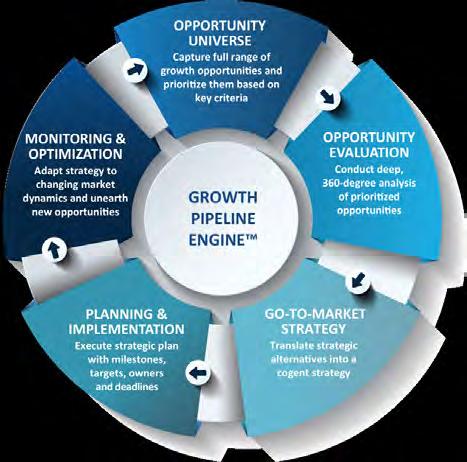


Developing, evaluating and prioritizing opportunities, building and implementing go-to-market strategies, and optimizing opportunities. The objective is to be a client’s first step on their growth journey.
For More Information E-mail: meenquiries@frost.com
i IEA, Global Hydrogen Review, 2021
ii IEA, Global Hydrogen Review, 2022
iii National Grid: https://www.nationalgrid.com/about-us
Disclaimer
(LOHC): Utilization of existing fossil-fuel handling, transportation and storage methods. Technology is currently in the nascent stages of development and is to be proven at an industrial scale. While there is no one-size-fits-all solution for hydrogen transport, the most viable option will be required to be analyzed on a case-by-case basis.
The current use of hydrogen is primarily as a chemical feedstock; however, this fuel could play a different role in future energy systems, finding applicability across multiple end-use segments.
evolution of the energy sector and is expected to play a key role in decarbonizing the economy across end-use sectors. GCC countries, especially the United Arab Emirates, the Kingdom of Saudi Arabia and Oman, are working on national strategies aimed at developing the hydrogen market in the region and positioning themselves as future hydrogen exporters. The region also demonstrates several competitive advantages that can enable the GCC to play a key role in the global green hydrogen economy:
Export Potential: The geographic location of the GCC region provides a strategic advantage through which global trade routes traverse. Not only does the region have strong connectivity with developed economies in Europe, but a network of ports and pipeline infrastructure provides the region with access to fast-growing markets in Asia and Africa.
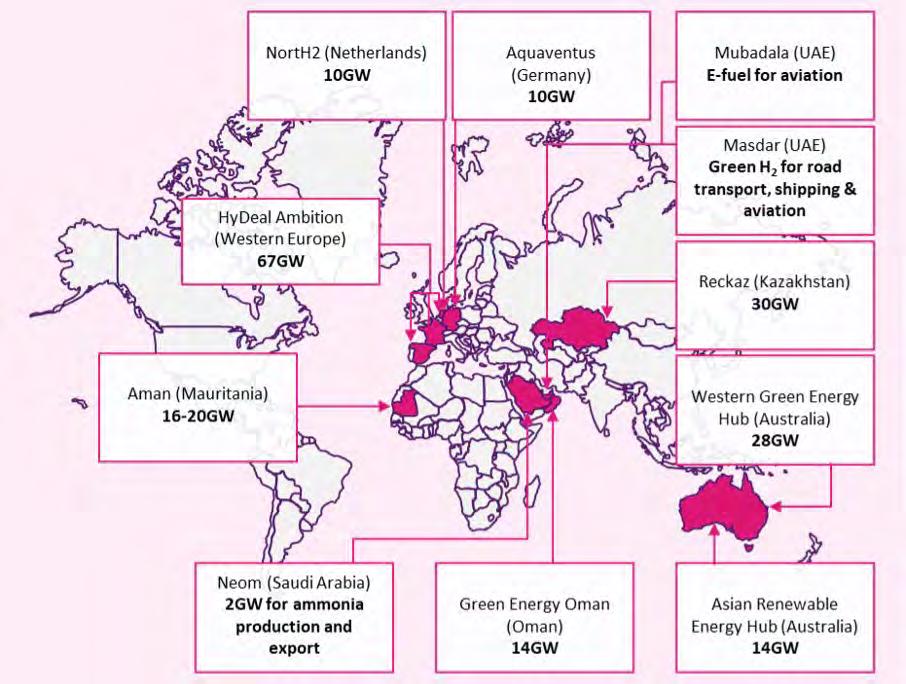
Frost & Sullivan is not responsible for any incorrect information supplied by companies or users. Quantitative market information is based primarily on interviews and therefore is subject to fluctuation. Frost & Sullivan research services are limited publications containing valuable market information provided to a select group of customers. Customers acknowledge, when ordering or downloading, that Frost & Sullivan research services are for internal use and not for general publication or disclosure to third parties. No part of this research service may be given, lent, resold, or disclosed to noncustomers without written permission. Furthermore, no part may be reproduced, stored in a retrieval system, or transmitted in any form or by any means—electronic, mechanical, photocopying, recording, or otherwise—without the permission of the publisher.
Globally, countries and organizations are taking note of hydrogen, especially green hydrogen’s value proposition, while developing ambitious plans and targets to meet net zero emission commitments.

Within the Gulf Cooperation Council (GCC), hydrogen has gained increasing recognition as a contributor to the
Solar & Wind Resource Potential: GCC countries experience high global solar irradiation, and several areas across the region experience strong, consistent wind conditions for reliable renewable electricity production. The abundance and availability of such renewable resources make the GCC region a potential site for the competitive production of green hydrogen.
For information regarding permission, write to: Frost & Sullivan
Financing Capabilities: Despite efforts to reduce the costs of electrolyzers and associated renewable energy projects, CAPEX remains a critical aspect of realizing a sustainable and carbon-neutral energy ecosystem. Through sustained oil and gas businesses, GCC economies have created significant financial reserves that are often channeled through sovereign funds toward developing strategically important projects.
Addverb, a global manufacturer and supplier of complete warehouse automation solutions, has recently partnered with Logsquare, a leading system integrator for logistics solutions, to expand its presence in the Middle East, especially GCC and Iraq markets.

The partnership will allow both companies to leverage their expertise and offer premium automation solutions to their customers.
Addverb’s expertise lies in delivering end-to-end intralogistics automation solutions based on Industry 4.0, IoT, and robotics. With a wideranging portfolio, the company offers unique combinations of fixed and mobile automation systems powered by robust enterprise software, to serve clients across a multitude of industries.
Logsquare provides a complete range of comprehensive integrated solutions, as well as consulting services to optimize logistics operations. As a renowned player in the Middle East region, Logsquare possesses local engineering and implementation expertise supported by a strong European backbone.
The partnership will primarily focus on integrating Addverb’ Autonomous Mobile Robots (AMRs) portfolio along with software like Fleet Management System (FMS) into Logsquare’s total solutions for their customers.
“We are delighted to partner with Logsquare to expand our reach in the GCC and Iraq markets,” asserted Pieter Feenstra, CEO, Addverb EMEA. “After opening our own office in Dubai for total solutions, we are excited to also offer our mobile portfolio to a renowned partner like Logsquare to accelerate our growth in this region,” he continued.
“We are eager to collaborate with them
as their expertise in logistics and integration will complement our expertise in automation and robotics, allowing us to offer a comprehensive solution to our customers,” he added.
“This partnership is a venture between a distinguished regional intralogistics player and a promising OEM with a diversified forward-looking technology.
Logsquare is seeking to enrich its solutions and product portfolio with Addverb’s AMRs. This will enable us to further boost our offerings and combine applications,” affirmed Jacques Adem, Managing Director, Logsquare.
“The main value addition will be on our client base in the MENA region whereby we will be able to join the differentiators of both entities, local engineering and execution capabilities paired with reliable cutting-edge technology,” stressed Jacques when asked about the importance and significance of the partnership.
Addverb and Logsquare’s cooperation promises to offer customers in the Middle East region a diverse selection of cuttingedge automation solutions to streamline supply chains, optimize operational efficiency and improve bottom lines. Both companies are enthusiastic about embarking on this journey together and anticipate a long and fruitful collaboration, a joint press communique concluded.

Benefits of having Automatic transmission.
• The optional automatic transmission knows the best gear to engage in any situation and allows for quicker yet efficient and optimal cruising speeds. That means more trips per day and a boost to overall productivity.

• Direct coupling “lock up” function for enhanced fuel efficiency and performance.

Wide range of choices to keep every type of business on schedule.

• 3 GVW ranges from 19 – 10.4 Tones.
• Up to 21 different basic configurations.
• 8 & 5ltr engines with 180hp – 280hp.
• Euro 5 emission levels.
GH8E Engine + Automatic Transmission + 11ton Rear Axle
Shipsy empowers organizations handling trade and logistics to accelerate business growth, optimize costs and enhance customer experiences using our smart end-to-end global logistics management platform.
Shipsy’s AI-powered platform and mobility suite seamlessly connect cross-border and local logistics by automating operations and ensuring intelligent 3PL management. Shipsy’s intuitive platform provides complete visibility of first, middle, and last-mile operations, unlocks operational efficiency, and leverages real-time and predictive analytics to make informed decisions,” affirmed Harsh Kumar, Chief Strategy Officer, Shipsy, in an exclusive interview with Global Supply Chain on the eve of Seamless Saudi Arabia 2023, staged in the Kingdom’s capital Riyadh on 4 and 5 September.
Shipsy is an Associate Sponsor at this landmark event.
GSC: What are Shipsy’s core functions and strengths?
Harsh Kumar (HK): Shipsy is a pivotal technology partner to our customers in their success, and we take immense pride in empowering them to optimize costs and boost profitability by leveraging our stateof-the-art solutions.
Shipsy’s 350+ team is based out of India, Dubai, Africa, and Indonesia, serving 200+ customers across the globe. Shipsy tracks 650,000+ containers per month, procures freight worth $150mn+ per month, and powers 60mn+ parcels.
From a broader perspective, Shipsy has integrations with 64+ major shipping lines, 50+ third-party logistics companies, 300+
freight forwarders, 50+ customs agents, and a network of over 20,000 global shippers.
GSC: Why is Shipsy participating in Seamless Saudi Arabia 2023, and what do you hope to accomplish with your participation?
HK: Shipsy will leverage this opportunity to showcase our technology, especially the innovations we drive in AI, and highlight how it’s helping Saudi Arabia build customer-centric, agile, costefficient, resilient, and sustainable logistics operations.
GSC: What sets Shipsy apart from its peers and its distinctive capabilities?
HK: We stand out in the logistics tech SaaS landscape due to our unique blend of innovative features, cutting-edge technologies, customer-centricity, and a relentless commitment to transforming the logistics and supply chain industry. Here is a quick look at the key differentiators:
Comprehensive Platform: Unlike many other solutions that focus on specific aspects of logistics, Shipsy offers a comprehensive platform that covers endto-end supply chain management. From order creation to delivery and post-delivery analytics, Shipsy’s platform streamlines the entire process for maximum efficiency.

AI-Powered Optimization: Shipsy’s integration of AI technologies sets it apart. The platform utilizes advanced Machine Learning algorithms for demand forecasting, route optimization, and inventory management. This ensures that logistics operations are efficient and adaptive to changing market conditions.
Predictive & Prescriptive Analytics: Shipsy goes beyond descriptive analytics by offering predictive insights. Its predictive analytics capabilities empower businesses to anticipate demand fluctuations, optimize inventory levels, and pre-empt potential disruptions. This forward-looking approach enables more proactive decision-making.
End-to-End Visibility: One of Shipsy’s standout features is its ability to provide realtime visibility into every stage of the supply chain. From tracking shipments to monitoring delivery routes, businesses gain actionable insights that enhance transparency and enable quick responses to deviations.
Customization and Scalability: Shipsy’s platform is designed with flexibility in mind. It caters to the unique needs of each business, allowing for customization and integration with existing systems. Shipsy’s platform grows seamlessly as the company scales to accommodate increased demands.
Collaboration and Communication: Shipsy fosters collaboration across the supply chain with its integrated Conversational AI capabilities. Our AI-powered co-pilot LIA (Logistics Intelligent Assistant) facilitates real-time communication, enabling stakeholders to stay updated on shipment status, resolve issues even before they occur, and make informed decisions.
Customer-Centric Approach: Shipsy places a strong emphasis on customer satisfaction. Its platform enhances customer experiences by providing accurate delivery estimates, real-time tracking, and proactive issue resolution. This customer-centric approach builds loyalty and trust.
Unified Data Hub: Shipsy’s platform is a centralized hub for data from various sources. This allows businesses to derive insights from a holistic view of their operations, making data-driven decisionmaking more effective.
Sustainability Initiatives: Shipsy recognizes the importance of sustainability in modern logistics. Its AI-driven optimization reduces fuel consumption, minimizes waste, and contributes to greener practices, aligning with businesses’ sustainability goals.
Continued Innovation: Shipsy’s commitment to innovation is a key factor in its differentiation. The company continually invests in R&D to stay ahead of industry trends and evolving customer needs, ensuring its platform remains at the forefront of technological advancements.
GSC: How significant is the Middle East and GCC for Shipsy?
HK: The Middle East has always been pivotal to Shipsy’s growth story and success. Now we expect to clock a growth rate of more than 125% in the region. The Gulf has been instrumental in the company’s growth trajectory contributing 35% of overall revenue.
GSC: Specifically, how is Shipsy faring in the UAE and now in Saudi Arabia since the opening of your RHQ (regional HQ) in Riyadh?
HK: We are experiencing continuous growth in the entire MEA and APAC region. We have onboarded local talent to boost customer service. Rapid technology innovation and a steady increase in human resources have made it possible for Shipsy to become one of the most capital-efficient startups with negligible burn and nearing profitability.
GSC: Shipsy recently signed a memorandum of understanding (MoU) with Monsha’at, the Small and Medium Enterprises General Authority of the Kingdom of Saudi Arabia, to expedite
Saudi Vision 2030. Tell us more.
HK: The MoU highlighted that Shipsy would offer its technology at a significant concession for all customers channeled through Monsha’at. We also earmarked an investment worth USD 10 million over five years in the region to drive technology innovation and research and development.
The Kingdom’s small and medium enterprises (SMEs) are most important in supporting the national economy. SMEs in KSA will increase exports, create new job opportunities for Saudi youth, diversify sources of income and expand the production base in line with the Saudi Vision 2030 which also aims to lower the unemployment rate from 11.6% to 7%, boost women’s participation in the workforce from 22% to 30%, and ensure SMEs contribute 35% to KSA’s GDP in the coming ten years.
This MoU’s objective will be to develop and support SMEs and entrepreneurship under the laws and regulations in force in the Kingdom of Saudi Arabia and commensurate with the available resources, aiming to drive growth and economic diversification.
GSC: What are your plans for debuting in Africa?
HK: Since the last few quarters, Shipsy has rapidly grown its presence in African markets by onboarding customers in the courier, express and parcel, last-mile delivery, eCommerce, and retail segments. Its commitment to transform the continent’s logistics operations was mirrored in its plan to onboard local talent, explore technology partnerships and boost customer service.
We recently established a regional headquarter in Africa in Cape Town and have already boarded Apoorva Kumar, former Group COO of Jumia, to our advisory team for the African market. Kumar has over a decade of experience building supply chain operations in Africa and GCC.
GSC: What are the opportunities and corresponding challenges for Shipsy in the region going forward?
HK: The eCommerce sector is experiencing rapid expansion across Africa. According to the International Trade Administration, Africa will surpass a user base of over five hundred million eCommerce consumers by 2025, with a consistent Compound Annual Growth Rate (CAGR) of 17%. The primary revenue contributors within this landscape are the fashion and electronics segments. Projections indicate that annual sales for fashion products and electronics are set to reach US$ 13.4 billion and US$ 11.2 billion, respectively, by 2025.
We enable our customers by automating core logistics processes by optimization of routes in alignment with business objectives and real-time constraints. This technology takes a proactive stance in mitigating transportation risks and enhances serviceability, automates carrier selection, and ensures sustainable and customercentric deliveries, contributing to profitability.
GSC: How extensive is the Shipsy interface with the logistics and supply chain segment?
HK: The Shipsy interface profoundly integrates with the logistics and supply chain domain. It is a central hub, connecting various supply chain stages for seamless data exchange. Leveraging AI and predictive analytics, it optimizes operations and adapts to changing conditions, resulting in substantial cost savings.
The interface fosters collaboration, ensuring stakeholders stay informed and coordinated. It’s scalable and customizable, catering to diverse business needs. Shipsy’s interface transforms logistics by enhancing efficiency, transparency, and responsiveness and generating significant cost savings across the supply chain.
GSC: What are Shipsy’s expansion plans for the region?
HK: We will continue to onboard local talent and increase our revenue share by partnering with customers across manufacturing, retail, courier express & parcel, and quick commerce industries.
350+ team from India, Dubai, Africa, and Indonesia 650,000+ containers tracked per month
$150mn+ worth freight per month
60mn+ parcels powered 300+ freight forwarders
20,000+ network of global shippers
Al Masaood Group has successfully completed Phase 1 and Phase 2 of its bonded warehouse system in collaboration with the General Administration of Customs in Abu Dhabi.
This collaboration is a result of a strategic partnership between the two entities announced in 2022 that aims to create better synergies between the government and private sectors, leading to improved work efficiencies and substantial cost savings.
The successful implementation will also see more seamless operations for imported and exported goods at Al Masaood Group’s premises in Abu Dhabi, according to a press release.
“The completion of both phases of the bonded warehouse system is a significant milestone that marks a new era of seamless operations for Al Masaood Group’s imported and exported goods in Abu Dhabi,” asserted Ahmed Salmeen, Al Masaood Group’s Chief Executive, Government Affairs.
Certified as a gold supplier for bonded warehouses, Al Masaood is also the first private sector company to be accredited by the General Administration of Customs in Abu Dhabi in the field of importing and exporting general goods under the global ‘Authorized Economic Operator’ program.
With the successful implementation of the first two phases of the bonded warehouse system, Al Masaood will benefit from seamless Port-to-Warehouse operations covering all vehicles as well as all spare parts imported by the Group’s divisions, whether for vehicles or industrial engines.
The operational implementation will significantly ease the process of shipment clearances for all goods and vehicles.
Report serves as a ‘compelling call for immediate action’
Al Masaood Group recently announced the launch of its inaugural Sustainability Report. This comprehensive document underscores the Group’s unwavering commitment to the United Nations Sustainable Development Goals (UNSDGs) and the UAE’s ambitious climate objectives, a press statement said.
The report, titled ‘Charting a Path to Sustainability Leadership’, provides a detailed account of Al Masaood Group’s sustainability journey, outlining the strategic initiatives undertaken across its various divisions to drive sustainable development and contribute to a greener future.
“Al Masaood Group has always been at the forefront of sustainable practices, and the launch of our first Sustainability Report is a testament to our commitment to driving green change,” asserted HE Masaood Ahmed Al Masaood, Chairman, Al Masaood Group. “We are in the unique position to drive positive change across multiple business and industry verticals to supporting the UAE’s transition to a low-carbon economy,” he continued.

The report showcases Al Masaood Group’s efforts in various areas of sustainability, including energy efficiency, waste management, water conservation, and community engagement.
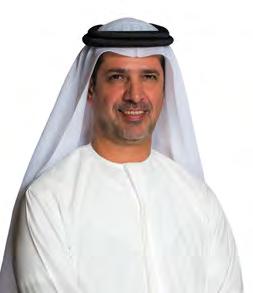

Currently, reverse logistics has a troublesome tendency to be less developed than its front-facing counterpart, and its cost impacts are notoriously high. The ideal solution is to partner with a provider that is capable of handling both forward and reverse logistics with high levels of efficiency and professionalism, asserts Agam Garg, General Manager, Yango Delivery UAE, in this special contribution.
Fast food, groceries, clothes, electronics, gifts — the list of items delivered daily to the doors of UAE residents is a long one and has expanded in recent years. The sheer volume of commerce conducted between businesses and private households across the nation may lead one to assume the country’s last-mile delivery sector is among the most advanced and robust in the world.
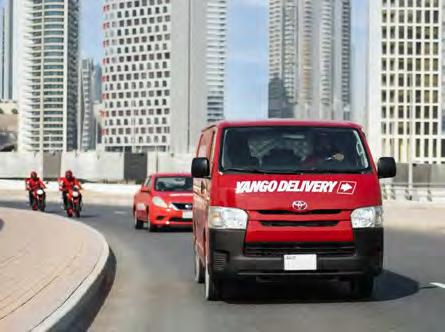
This assumption would not be without justification. Since the early days of the COVID pandemic, forward logistics has
scaled and matured significantly producing intuitive and informative user experiences that have led to yet more customer engagement.
While this is a success story worth discussing, it does not tell the whole tale. Let us consider reverse logistics, the important work of moving goods back up the supply chain. This can be sold goods returned by customers or unsold goods returned by distribution partners.
Washington DC-headquartered Reverse Logistics technology company Optoro estimates that for every dollar of the retail price of a good, we can add 66 cents to the cost of its return. That means it typically costs companies US$ 66 to process the return of a US$ 100 item.
We must also consider the adverse effect poorly managed reverse logistics has on the customer experience and hence
brand reputation. We should remember that customers involved in the process are already displeased with the product. These are digital natives, not known for their patience with drawn-out processes. Frustrate them further at your peril. If we also consider that we live in the age of ESG and that ill-conceived delivery operations lead to negative environmental impact, we can see plenty of incentive to optimise reverse logistics.
As it stands, the UAE logistics market is home to an impressive majority of forward logistics providers. However, the number of reverse logistics providers is very small, relatively speaking. Traditionally, businesses have partnered with one provider for forward logistics operations and another for reverse.
This complexity can lead to a hampering lack of visibility into the process for the
Currently, reverse logistics has a troublesome tendency to be less developed than its front-facing counterpart, and its cost impacts are notoriously high. The ideal solution is to partner with a provider that is capable of handling both forward and reverse logistics with high levels of efficiency and professionalism, asserts Agam Garg, General Manager, Yango Delivery UAE, in this special contribution.
seller. Meanwhile, the customer experience is impacted by a scenario that will make little sense to someone outside the industry—that a product found to be defective on arrival cannot be immediately returned to the hands of the courier that delivered it. “Not authorised to process returns” is a response that will ring hollow in the ears of most of today’s customers.
The ‘not authorised’ problem evaporates, and operations become more streamlined across the board. Contract negotiation is also simplified, as is management and communication. Customers and suppliers endure far fewer missed collections under this system.
To make unified logistics work, companies must invest in the right technology. Even with a robust internal fleet or the best provider around, operations cannot hope to match the expectations of the market without an agile platform that can model last-mile operations flexibly. Not only do current solutions not meet this criterion; they have been deliberately designed to do the opposite, to cater to the current approach of distinguishing between forward and reverse logistics.
Things must change if businesses are to capitalise on growing consumer markets. A good logistics platform must empower a delivery driver to execute both forward and reverse logistics within the same round trip. While revamping their forward-reverse policy, businesses should also address another shortcoming of many fleet management platforms—that they only allow drivers to carry out one pick up and one drop off per route. If operations allow for the execution of multiple pick-ups and drop-offs in a single route, efficiency will be increased by many orders of magnitude.
In the delivery arena, efficiency runs on effective labelling. While this is obviously true for forward operations, it still applies to returns. In fact, the risk of improper labelling is higher with reverse logistics given that the labelling process is generally left to the driver and carried out at the customer’s location, while the customer looks on impatiently.
This is where the right process can come to the rescue. Businesses must provide their delivery professionals with easy-to-apply labelling and packaging to ensure a return can be processed quickly and efficiently. Returns labelling offers opportunities for efficiency enhancements that are especially significant to brands like clothing retailers, which experience above-average rates of returns. Such businesses could even get ahead of the curve by providing return labels with each original package at the time of delivery so customers or couriers can apply them quickly and conveniently.
Return logistics is a cumbersome process and has traditionally been a drag on profitability, but in the experience-
first economy, it is a crucial element in maintaining customer satisfaction and brand loyalty. Just think about how many bad reviews you have read where the underlying gripe concerned a poorly executed return process.
We live in an age of options, digital options that ensure we do not have to accept prevailing inefficiencies. The right fleet management platform with the right suite of options can pave the way to multidrop-off, multi-pick-up, forward and reverse logistics that keeps customers happy and shaves business costs.
In a hypercompetitive market, advantages accrue to those that stand out. If your competitors cannot crack the unified logistics equation and you can, that can only be good for brand longevity.

Artificial Intelligence and Machine Learning (AI/ML) are hot topics these days. They always come up in meetings (whether virtual or in-person) with customers, partners, industry analysts, journalists, and others. Sometimes, the questions and discussions are very focused and specific.
However, at other times, they are quite unfocused and generic asserts Joshua Goldfarb, Security and Fraud Architect at F5, a Seattle-USA headquartered technology company specializing in application security.

So, what are some problems that enterprises struggle with, that AI/ML can help solve? While not an exhaustive list, here are some of my favourites:
Automated attacks are often perpetrated by networks of bots. These attacks introduce a number of different risks into enterprises, including fraud losses, inventory manipulation, reputation damage, data theft, infrastructure costs, performance costs, and support costs, among others. Detecting and mitigating automated attacks involves understanding the difference between human and automated traffic.
While this may sound simple conceptually, in practice it is a difficult undertaking that requires a variety of different techniques. One of these techniques is the use of AI/ML - not generally of course, but instead, applied very specifically to the problem of
separating unwanted automated traffic from legitimate human traffic.

Fraud is a growing problem for enterprises, and particularly for those enterprises that transact heavily online. Enterprises can suffer fraud losses in many ways, though two forms of fraud that heavily impact the digital channel are Account Takeover (ATO) and Account Opening (AO) fraud.
ATO most often involves a fraudster or other unauthorized user taking over an account using compromised credentials, man-in-the-browser (MITB), social engineering, or some other means. AO involves a fraudster or other unauthorized user opening an account using stolen or synthesized.
Reliably detecting fraud without generating a large number of false positives requires more than rule-based and signature-based fraud detection. It requires understanding the intent of the end-user in the session as they interact with the online application.
API security is another area where AI/ML can be applied to solve challenging problems. Enterprises have needed to push forward technologically to keep up with rapidly evolving market demands. This has entailed pushing out customer-facing applications and APIs to meet end-user demands.
In some cases, these applications and APIs are not adequately secured and protected before being released. In other cases, they are not properly inventoried and managed.
All of these introduce vulnerabilities and weaknesses into applications and APIs. This is where discovery powered by AI/ML becomes of great importance to enterprises. Discovery can identify unknown, noninventoried, and/or unmanaged APIs.
When people ask me broad, general questions about AI/ML, I tend to focus the discussion a bit. To me, AI/ML is a tool that can and should be applied to specific security and fraud problems that it can help solve. Indeed, there are several important problems that nearly every enterprise encounters that AI/ML have been shown to lend a unique advantage to.
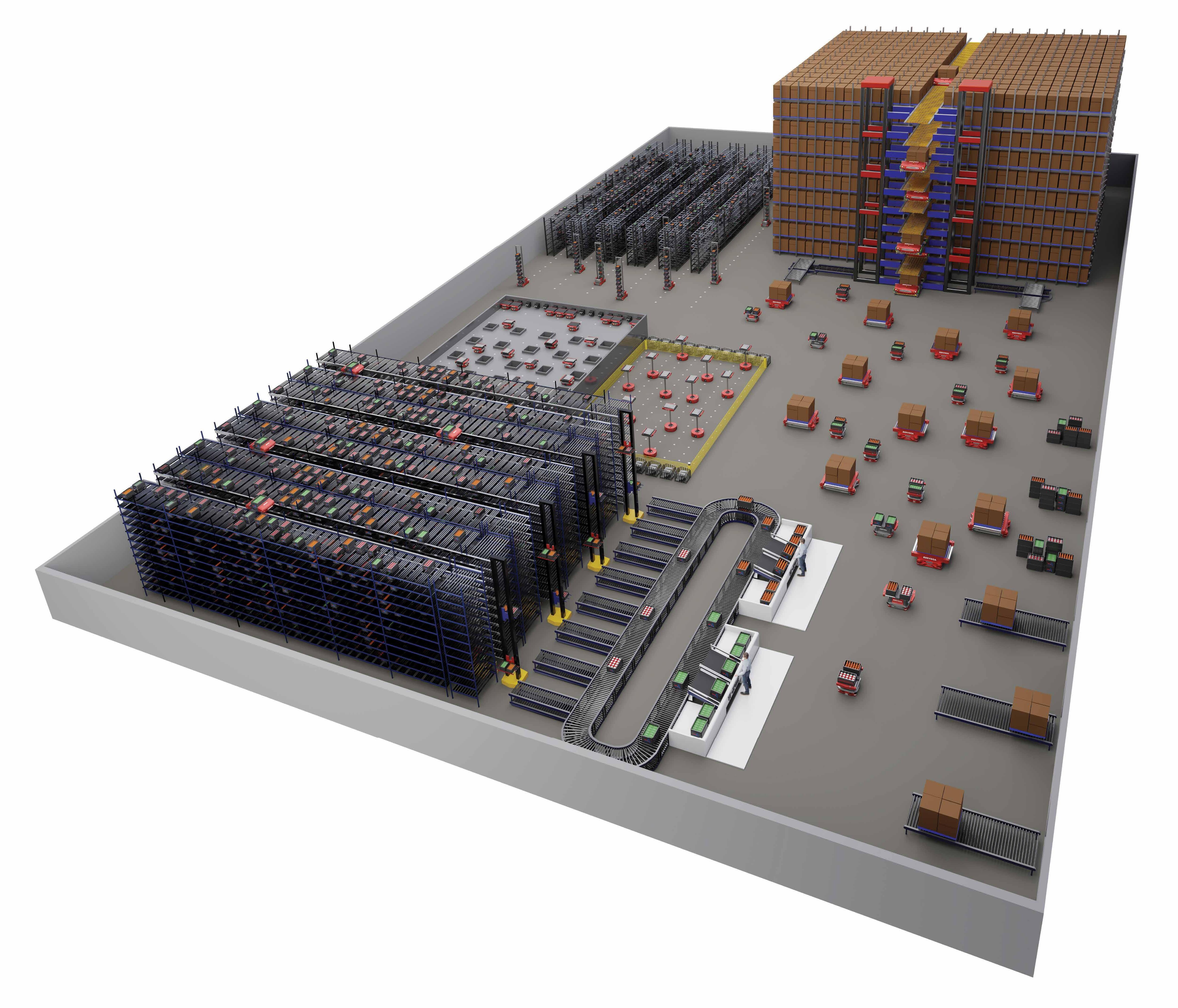

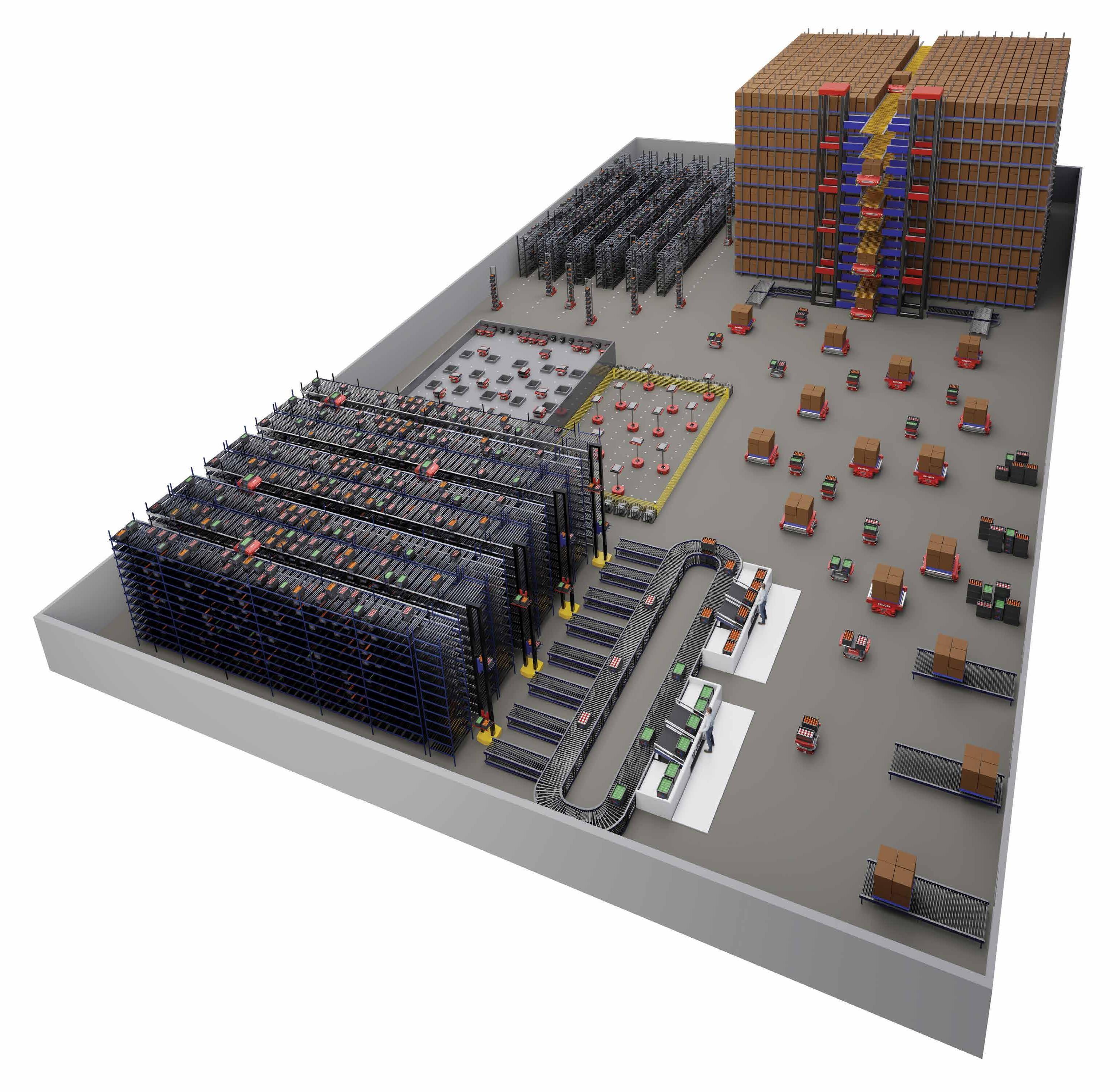

In today’s fast-paced and digitally driven world, consumer expectations have evolved drastically. Customers now demand a seamless and consistent experience across all touchpoints, from brick-and-mortar stores to online platforms asserts Dr. Shereen Nassar, Global Director of Logistics Studies and Director of MSc Logistics and Supply Chain Management Suite at Heriot-Watt University Dubai.
The pandemic has significantly boosted the online retail sector, causing a permanent shift in consumer buying habits. Customers now have high expectations for prompt product availability and quick delivery to their doorstep or for convenient pickup options.
This puts immense pressure on retailers to meet these demands efficiently. Additionally, individuals who previously only relied on physical stores have now embraced online shopping, further driving this trend.
This surge in e-commerce demands drives retailers to adapt their intralogistics to handle the increasing volume of orders while remaining responsive in fiercely competitive markets. Omnichannel evolved as a customer-centric sales strategy that ensures a high level of integration and alignment across multiple distribution channels for a seamless shopping experience.
The omnichannel concept overcomes the challenges of multichannel which operates
independently and in silos that can compromise the customer experience due to inconsistent practices and poor tracking practices. Unlike multichannel, omnichannel allows a holistic view of customers rather than fragmented customer data from various channels.
The primary goal of omnichannel logistics is to provide customers with a seamless and consistent experience across all channels. By doing so, businesses can build customer loyalty, improve satisfaction levels, and increase the likelihood of repeat purchases. Customers can shop through their preferred channel without facing discrepancies in pricing, inventory, or service.
To meet the rapidly changing customer demands, businesses across sectors are adopting an omnichannel logistics approach. It is an integrated strategy that redefines the supply chain landscape. It focuses on delivering a unified and seamless customer experience across all channels.
This includes physical stores, e-commerce platforms, mobile apps, social media, and any other interaction points between the business and its customers. Rather than operating in silos, omnichannel logistics
emphasises the synchronisation and integration of all supply chain elements to provide customers with consistent and personalised service.
A well-known example of omnichannel is Apple, which offers a seamless and consistent experience for its customers through its physical retail stores, online store and the Apple support application allowing customers to switch between these channels smoothly, which ensures a consistent experience.

One of the crucial aspects of omnichannel logistics is real-time inventory visibility. Businesses need to have accurate and up-to-date information about stock levels across all locations and channels. With this data, companies can optimise inventory management, reduce stockouts, and fulfil customer orders more efficiently.
Moreover, businesses can achieve real-time inventory accuracy and visibility by using advanced technologies like RFID, barcode scanning, and inventory management systems. Omnichannel logistics also aims to streamline order
fulfilment processes, enabling businesses to fulfil orders from the most optimal location. It could be a nearby retail store, a distribution centre, or a third-party fulfilment partner.
Businesses can provide customers with more flexibility and faster delivery, enhancing their overall shopping experience by leveraging various fulfilment options, such as ship-from-store and clickand-collect.
For instance, Noon, a leading e-commerce platform in the Middle East provides click and Collect service. This service enables customers to place orders online and then conveniently collect their purchases from designated pickup locations, rather than having them delivered to their homes.

Operating an Omnichannel model has its own logistics challenges since it makes operations more complex for businesses. The source of complexity comes not only from using multiple distribution channels but also from the need for a very high level of operational integration and alignment.
One of the key challenges is related to the complexity of managing reverse logistics considering the widely implemented product return policy.
Another challenge is related to the complexity of synchronizing inventory flow considering that customer demand from specific channels is hard to predict, leaving some warehouses completely out of stock while store shelves are full. For omnichannel, tracking packages is more challenging due to the use of multiple distribution centres and might result in packages being lost causing customer frustration.
Omnichannel logistics is a progressive approach that completely transforms how businesses manage their supply chains. It requires a proper warehouse management system and the use of advanced routing software to shorten the lead time and accelerate the delivery process.
It is also important to achieve a certain level of inventory optimization through shipping directly from the local retail store instead of relying on traditional shipping approaches from warehouses and
distribution centres. This would help avoid the unbalanced shortage of stock.
Companies can effectively establish a significant competitive advantage in today’s ever-changing market by prioritising seamless integration and ensuring a consistent customer experience across all channels.
Embracing the transformative potential of omnichannel logistics empowers businesses
to elevate customer satisfaction, streamline operations, and foster growth in a world that is increasingly interconnected.
As technology continues to advance, the significance of seamless integration through omnichannel logistics will only intensify, making it a vital strategy for any forwardlooking business aiming to thrive in the contemporary marketplace.

Over the first half of 2023, all the main forwarders have shown significant reductions in their top line revenue as well as their profitability driven mainly by a halving of sea and air freight rates. Overland trucking business has suffered less globally and in contract logistics, driven typically by longer term business contracts, revenue and profitability have remained more stable and, in some
instances, have actually grown.
For the top three global forwarders we saw Kuehne+Nagel’s revenues over the first half of 2023 fall 38% and profitability drop 47% against the same period last year. For DSV, revenue dropped 36.5% and profitability was down 27%.
The DHL Group including the German postal business fared better although the forwarding arm also fell 40% in revenue and
profitability was down 41%. However, due to a different mix in DHL’s business overall Group revenue fell far less by only 12% with profits down 25% against the same period the year before.
Over the past three years due to high rates freight forwarding companies globally focussed on top line growth including M&A activity. In 2023 their focus is more on cost reduction and efficiencies.
As we move into the final four months of 2023, the high freight rates witnessed in 2021-2022 are now well and truly behind us. What is important to underline is that the sharp reduction in revenue and profitability within the forwarding sector is mainly a result of a halving of freight rates which have been inflated over the past three years due to the pandemic related supply chain volatility, affirms Eelco Dijkstra, Founder-Managing Partner, Europhia Consulting.
The whole Covid-19 period created considerable supply chain volatility and trade imbalances that have now started to normalise somewhat. The high profit levels were used to buy other logistics companies and/or to further develop existing capabilities to scale up.
Over the past 18 months we saw a lot of business focus on increasing air freight capacities. Companies such as DSV and CMA-CGM started their own cargo airlines and Klaus-Michael Kuehne, the majority shareholder of Kuehne+Nagel, invested 17% into Lufthansa. DHL and UPS also invested heavily into the cargo expansion of their airfreight capacity and so too did many airlines such as Emirates, Etihad and Qatar Airways.
The downside to all these acquisitions and ramping up of overall supply capacity is that as the market has started to decline in the second half of 2022, and rates for freight forwarding have come down quickly, cost structures have not moved down at the same pace.

One of the key cost areas freight forwarders will be looking at are staffing costs. As revenues escalate, over-hiring of staff in 2020-2022 will need to be tackled in 2023, a process that has already started. Cost optimisation will be a key area of focus as freight forwarders aim to shift their strategy from revenue growth to profitability protection.
The global freight volumes will reduce 3.9% in 2023. The key reasons for the decline in global freight volumes continue to relate to geo-political reasons and high interest rates impacting business and consumer confidence. The global e-commerce sector still seems to be holding out. The same can be said of the global pharmaceutical sector. Other sectors have also similarly suffered.
As a result, market volumes declined globally over the first half of 2023 in continuation of a slowdown started in 2022. DSV’s airfreight volumes were down almost 21% and its ocean freight in TEU
was down by just over 9%. DHL’s ocean freight business was down 7%. According to Transport Intelligence, the global freight forwarding market for the whole of 2023 will contract 3.9% in volume.
However, there are strong regional differences. The MENA region will continue to show growth on the back of relatively strong economic growth across the region.
Regarding the near-term global freight market, Jens Bjørn Andersen, CEO, DSV, notes that “market development is still uncertain, although we find signs of stabilisation and we expect to see in the coming quarters a gradual improvement in world traffic volumes”.
closer to key consumer markets. From a risk management perspective, there will also be an element of “national critical” supply chains such as those for high technology goods and some pharmaceuticals being produced closer to home markets rather than coming from manufacturing sites far away.
There is good news for freight forwarding in the Middle East and Africa. The World Bank has forecast 3% growth for 2023 across the MENA region. PwC says that the MENA economy has bounced back strongly since the Covid-19, is in many ways now stronger and more resilient than ever. Saudi Vision 2030 will for sure be a key driver of growth with major investments in logistics infrastructure, manufacturing and a more diverse less energy dependent economy.
This is also good news for the United Arab Emirates driving its own future economic vision across Abu Dhabi and Dubai. Yemen with its civil war coming to an end, could prove to be a key growth market in the years to come.
McKinsey’s latest June 2023 Global Economics Intelligence executive summary is slightly more bullish and mentions that global executives are more positive; consumer confidence is improving but slowly; and emerging economies are starting to rebound.
Large emerging markets such as India, Brazil, Indonesia will also gravitate more logistics activities especially in e-commerce and growing domestic manufacturing.
A trend to watch is an increase in near shoring which will increasingly affect manufacturing supply chains. Nearshoring is a result of global geo-political tensions with more emphasis on reducing manufacturing and supply chain risks by manufacturing closer to key markets.
It will likely also result in less ‘single’ global manufacturing sourcing choosing instead for more regional sourcing centres
In the Arabian Peninsula, Yemen has the second largest population of 33 million only just behind Saudi Arabia. In North Africa, its largest economy, Egypt, will continue to grow at a rate of more than 5%. In all these markets, final mile e-commerce will play an increasing role.
Intra-regional trade still plays a limited role in integrating the MENA countries, accounting for only about 8% of both exports and import volumes by value within the region compared to 60% of trade within the EU.
Dubai as a regional gateway for freight forwarding and distribution will continue to expand taking advantage of its strong logistics infrastructure and free zones already in place to facilitate regional trade.
Emirates SkyCargo is looking to double its cargo capacity over the next 10 years. DP World is moving more into integrated logistics solutions as it expands further into emerging markets across Africa and other areas throughout MENA and into India.
Currently, there is a strong focus on automation technologies emerging as a linchpin for progress. Operators are harnessing these technologies to heighten productivity and efficiency and navigate labour uncertainties, affirms Rami Younes, General Manager, Swisslog Middle East.
In 2023, the landscape of material handling stands at a crossroads, shaped by the echoes of recent upheaval and a persistent drive for innovation. 2022 saw material handling organisations regaining a sense of normalcy within the ever-evolving industry.
The MEA Automated Materials Handling Market is projected to reach US$ 1890mn accompanied by the MENA e-commerce market’s meteoric rise, projected to reach US$ 57bn by 2026. This interplay of innovation, stability, and data underscores the dynamic narrative of materials handling in the era ahead.
Amidst this transformative backdrop, five trends are redefining the industry:
ULTRA HIGH-DENSITY STORAGE
Ultra-high-density storage has emerged as a transformative trend in the realm of warehouse automation, offering an effective solution to the persistent challenge of space utilization. In an era where e-commerce and supply chain demands are accelerating, optimizing storage efficiency is paramount.
This innovative approach involves maximizing storage capacity within a confined footprint, leveraging advanced technologies such as automated robotic
systems, vertical stacking, and intelligent inventory management. By capitalizing on every available inch, businesses can not only streamline their operations but also reduce overhead costs associated with larger warehouse spaces.
Swisslog’s AutoStore stands as a pinnacle of innovative warehouse automation, renowned for its exceptional features that redefine storage and retrieval systems. At its core lies a grid-like arrangement of bins, managed by a fleet of autonomous robots.
This intricate technology allows for unrivalled space optimization, as the robots navigate the grid, delivering and retrieving

bins with precision and speed. AutoStore’s modular design facilitates scalability, accommodating evolving business needs effortlessly.
Real-time inventory tracking and order processing enhance operational visibility and efficiency, while its adaptability to various product sizes and shapes makes it a versatile solution.
Carton Handling: The opportunity is in customising pallets for more efficient store replenishment. Until recently, retailers have been limited in their options for systems capable of building mixed-case pallets based on store layouts. But in the last several years, multiple manufacturers, including Swisslog, have introduced palletizing systems that will help drive increased adoption of this technology.
Item picking: This is a challenge for robotic arms due to the range of shapes and sizes being picked. Robot manufacturers have attempted to refine robot vision and gripping systems but this has ultimately limited adoption.
Now, developers are focused on ensuring that robots can accurately and reliably pick products that are easily graspable, improving performance in select applications and spurring renewed interest in the tech.
Automated e-grocery fulfillment centres (EFCs) and micro fulfilment centres (MFCs) have gone through the entire Gartner Hype Cycle in just a couple of years. In early 2020, with the pandemic creating a sudden spike in e-grocery sales, they rose quickly to the ‘Peak of Inflated Expectations’.
Then, as we moved through 2021 and 2022, this strategy slid into the ‘Trough of Disillusionment’ as some operators struggled with deployments. However, some grocers moved forward with their deployments because they understood the e-grocery market.
Outsourcing fulfilment to third parties seems like an easy solution but a grocer’s brand can be overshadowed by their fulfilment partner, and there is a risk that third parties will ultimately cut grocers out of the process.
Manually picking from store shelves can work when order volumes are low, but as volumes grow this strategy creates aisle congestion that alienates in-store shoppers and is difficult to scale in today’s tight labour market.
With research showing that the MENA online grocery market is expected to grow to reach US$ 25bn by 2030 and the UAE leads with e-grocery penetration of around 9%, the sector has become increasingly important. First-movers are streamlining the process for the second wave of automated grocers.
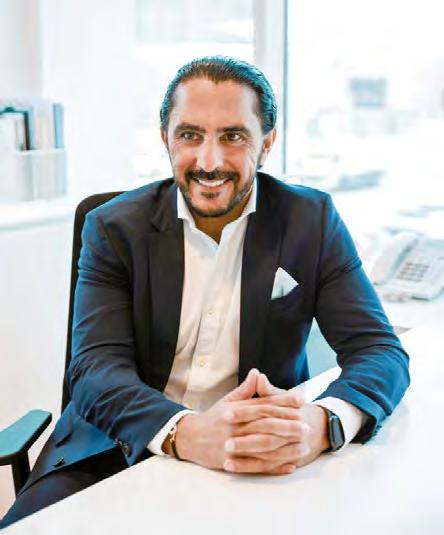
Warehouses increasingly adopt numerous automation setups, with a shift from finetuning individual systems to harmonising the operation of multiple ones. The evolution emphasises consolidated platforms integrating diverse control modules, poised to act as the conductor of
this orchestration.
This intelligent synchronisation orchestrates humans, processes, and machinery, elevating efficiency, not solely in isolated systems, but across the entire warehouse setup.
There is a growing demand for environmentally friendly logistics globally, with 75% of shippers actively seeking greener options when exporting goods, according to the World Bank. Moreover, electric automation technologies, such as robotics, rely on less electricity, consuming only 0.1 kW of energy per hour, which can even be generated from renewable energy or cleaner sources.
To set an example, Swisslog implemented its first 100% solar-powered warehouse automation system, demonstrating the ability of these systems to operate with onsite renewable energy.
The challenge lies in measuring, tracking, and implementing these pledges effectively
In the face of rising global temperatures and increasing carbon emissions, companies worldwide are making ambitious pledges to reduce their carbon impact.
One of the significant challenges many companies encounter is effectively measuring and managing sustainability across their supply chains, affirms Hasneen Sheela Shereef, Head of Marketing & Communications, MEA, TCS in the Middle East, Africa, and Mediterranean region, in this special Opinion Piece.
In this article, Tata Consultancy Services (TCS) through its study with Microsoft explores the importance of transparent supply chain measurement and its role in driving the transition to net-zero business ecosystems.

Over the last several decades, carbon emissions have soared, leading to a significant rise in average global temperatures. To combat this, it has become widely acknowledged that
achieving a shared global goal of cutting carbon emissions by 45% in the next 20 years is crucial for sustainable development.
Encouragingly, businesses are stepping up, with companies pledging to use 100% renewables and avoid investing in deforestation-linked activities. However, the challenge lies in measuring, tracking, and implementing these pledges effectively.
To evaluate how companies are managing their sustainability initiatives, TCS and Microsoft collaborated to research and analyze publicly available data. The findings revealed that enterprises, regardless of size and revenue, are increasingly conscious of sustainability.
However, they face difficulties in measuring the value of decarbonization efforts within their supply chains. This
knowledge gap emphasizes the need for improving the quality of global supply chain data to accurately measure and understand their carbon footprints, thus bridging the missing link to a net-zero business ecosystem.
Through an examination of public data from 400 companies, several insights emerged. Approximately 51% of the analyzed companies actively participate in the Dow Jones Sustainability Index, demonstrating their commitment to sustainability. Moreover, 52% of the companies publicize climate action.
However, most of the companies struggled to validate data and insights related to their supply chain emissions. Industries such as manufacturing, energy, retail, and consumer goods showed higher disclosure rates, indicating a strong desire to lead and influence sustainability practices.
While only 16% of the analyzed companies have publicly set science-based targets for operational carbon emissions, a mere 11% have committed to science-based targets for their supply chains.
To address this, a shift towards reimagining supply chains is essential. Companies must focus on reducing carbon emissions associated with products and packaging, which often account for a significant portion of overall emissions. Transforming global supply chains can be a pivotal step toward more sustainable practices.
Consumers are increasingly seeking credible product labels to make informed decisions about the products they purchase. Studies have shown that sustainability labels are desired by consumers, and businesses are responding by adopting carbon labels and ecological rating systems.
Aligning sustainability goals positively impacts public perception and, ultimately, financial performance. This demonstrates the need for transparency in supply chains to build trust and accountability.
Managing sustainability-related risks and opportunities necessitates the establishment of core infrastructure and technology capabilities. Supply chain sustainability data is often fragmented and stored in spreadsheets, making it challenging to ensure accuracy and governance.

Digitalization and digital transformation play crucial roles in addressing these challenges. Cloud adoption offers organizations a significant step toward achieving net-zero emissions, alongside cost savings, operational efficiency, business agility, and innovation.
To create a competitive supply chain data ecosystem, organizations must
aggregate, wrangle, augment, and curate data from suppliers into a single source of truth. This comprehensive information allows for accurate recording, analysis, and visualization of emissions and environmental.
One of the examples of a company that is known for developing sustainable projects and initiatives is Masdar in the UAE. The company has built Masdar City, which is a carbon-neutral and zero-waste city.
Measuring and managing sustainability across supply chains is complex yet crucial for companies committed to achieving a net-zero future. Leveraging supply chain
data allows organizations to gain deeper insights into their environmental impact and identify areas for improvement.
Collaboration, transparency, and technological advancements play key roles in driving the sustainable transformation of global supply chains. With concerted efforts, businesses can pave the way toward a more sustainable and prosperous future.
(Tata Consultancy Services is a global IT services, consulting and business solutions organization that has been partnering with many of the world’s largest businesses for the past fifty years.)
Mark Robert Henning is Managing Director, AutoFlight Europe, where he spearheads the design and certification of the eVTOL aircraft, Prosperity I. With 27 years of experience in the aviation industry, Henning has built a formidable reputation as an aeronautical engineer, having graduated from Munich’s Technical University. Throughout his career, he has been instrumental in the construction and certification of various aircraft types.
Henning’s unwavering dedication and expertise continue to drive the progress of AutoFlight Europe, propelling the eVTOL industry forward and reshaping the landscape of urban air mobility.

As the aviation industry enters a transformative era, the rise of electric Vertical Takeoff and Landing (eVTOL) aircraft brings about exciting possibilities for transportation.
Brian Cartwright, Client Partner, Global Supply Chain Solutions, Pedersen & Partners, and a regular contributor for Global Supply Chain, recently spoke to Mark Robert Henning, Managing Director, AutoFlight Europe, a leading player in the eVTOL space.
In this exclusive interview, Henning shares insights into AutoFlight’s groundbreaking ‘Prosperity I’, the challenges faced by aviation suppliers in adapting to this new development, the influence of automotive suppliers, and the crucial role of an efficient and scalable supply chain.
Global Supply Chain (GSC): AutoFlight has been at the forefront of eVTOL development. Can you tell us more about Prosperity I and its significance in the industry?
Mark Robert Henning (MRH): The Prosperity I represents a significant milestone in eVTOL technology. It embodies advanced electric propulsion systems, cutting-edge autonomous capabilities, and an aerodynamically optimized design that prioritizes safety and efficiency.
With a range up to 250 kilometres and the capacity to transport up to four passengers and a pilot, it signifies the realization of our vision for sustainable urban air mobility and has the potential to revolutionize the way we travel.
GSC: With the rapid advancement of eVTOLs, what challenges do you anticipate aviation suppliers will face in adapting to this new development?
MRH: The aviation supply chain will undoubtedly encounter various challenges in this new era. One of the most critical aspects is the establishment of an efficient and scalable supply chain. As the demand for eVTOLs rises, suppliers must ensure timely and reliable access to components, systems, and raw materials.
The challenge lies in meeting increased production volumes, maintaining quality control, and optimizing costs, all while
adhering to stringent aviation regulations.
GSC: What can aviation suppliers learn from automotive suppliers in terms of mass production processes?
MRH: Automotive suppliers have excelled in streamlining their production lines to meet market demands. Their expertise in efficient manufacturing, supply chain management, and cost optimization is invaluable.
Aviation suppliers can draw inspiration from automotive practices to achieve faster production cycles, reduce costs, and ensure consistent quality across their operations. Collaboration between the two industries can foster knowledge exchange, driving innovation and expediting progress in the eVTOL sector.
GSC: With a global reach, how can the industry manage the supply chain and service locally to ensure efficiency and avoid delays or logistical challenges?
MRH: It is crucial to efficiently manage the global supply chain while providing localized services. Advanced supply chain management tools, such as blockchain technology, can enhance transparency, traceability, and efficiency across the supply chain.
At AutoFlight we are working on these projects and trying to learn from different industries. For example, learning from the telecommunications sector, where global companies maintain local service centres, can help address logistical challenges and ensure timely support for eVTOL operations.
GSC: Considering the challenges faced by the eVTOL industry, how can issues such as customer service and Maintenance, Repair, and Overhaul (MRO) be addressed to ensure timely delivery of replacement parts?
MRH: Customer service and MRO are great challenges as the global reach of the eVTOL operations will demand innovative solutions. The industry will need to work with advanced tracking and logistics systems to streamline part deliveries. Additionally, adopting predictive maintenance technologies and leveraging data analytics can enhance MRO operations, enabling proactive maintenance and
minimizing downtime.
Also, in these are eVTOL companies can learn from best practices in the automotive industry such as just-in-time manufacturing and after-sales support to streamline production. By establishing strategic partnerships with trusted suppliers and service providers, we can streamline the supply chain, expedite parts delivery, and maintain rigorous quality control standards to meet the needs of our customers.
GSC: In the aerospace industry, counterfeit or unapproved parts can be a concern. How can the industry tackle the issue of bogus parts to maintain the highest standards of safety and reliability?
MRH: In the helicopter industry we encountered the issue of bogus parts. Being a new industry the eVTOL ecosystem might face similar challenges with counter flight parts, which can only be talked about through a multi-level approach. This should include strict supplier vetting processes, including thorough audits and certifications. Leveraging emerging technologies such as RFID tags or digital twins can enhance traceability throughout the supply chain. Finally implementing rigorous testing procedures for every part will be important to ensure the highest safety levels.
GSC: In light of the challenges and opportunities discussed, what do you see as the key to establishing a successful supply chain for the eVTOL industry?
MRH: Building a successful supply chain for the eVTOL industry requires collaboration, innovation, and adaptability. Suppliers must actively engage in partnerships, exchange knowledge, and embrace new manufacturing techniques.
It is crucial to establish robust quality control processes, optimize logistics and inventory management, and invest in advanced manufacturing technologies. Also, regional distribution centres and service hubs can help to reduce transportation costs, optimize inventory levels, and provide fast support to our customers.
GSC: AutoFlight recently achieved a world record in the eVTOL field. Could you share some details about this accomplishment?
MRH: Indeed, we are proud to have set a world record for the longest eVTOL flight. Our Prosperity I aircraft completed a nonstop, autonomous flight of 250.5km on a single battery charge in February 2023.
This achievement underscores the progress we have made in extending the range and endurance of eVTOLs. It not only paves the way for longer-distance urban air mobility applications but also
demonstrates the feasibility of electric aviation as a sustainable transportation solution.

GSC: Finally, as the industry evolves, do you see a shift from transportation of people to cargo logistics in the eVTOL sector?
MRH: Absolutely. While passenger transportation remains an exciting prospect
for eVTOLs, the cargo logistics segment holds immense potential. eVTOLs can offer swift and efficient delivery of goods, reducing road congestion and enhancing supply chain operations.
From medical supplies to urgent spare parts, eVTOLs have the capacity to revolutionize last-mile logistics and timecritical deliveries, making a profound impact on various industries.
Brian Cartwright is Client Partner, Global Supply Chain Solutions at Pedersen & Partners. He specialises in Board, CXO and Senior Executive Search, leveraging over 20 years of experience in business leadership, executive search, and strategic advisory.

He leads the firm’s Global Supply Chain Solutions Practice, is a leading member of the Aerospace, Defence & Intelligence team and is a member of the Automotive & E-Mobility Practice Group.
Cartwright partners with listed and privately-owned enterprises, helping them build management teams that raise the bar to transform and improve supply chains and improve the organisations’ capability, efficiency, and service levels across the entire value chain.












Free zones are a cornerstone of the Middle East’s global trading and logistics prowess, providing businesses with wide-ranging benefits such as tax and customs incentives, welldeveloped infrastructure and connectivity to various parts of the world.
“The Middle East is fast becoming a major trading hub for all manner of cargoes and services, and free zones are a vital component of the region’s logistics trade,” remarked Fredrik Nystrom, Group Vice President, Middle East, GAC, global shipping, logistics and marine services provider.

“Having operational presence in the zones is a necessity for logistics providers operating in the region,” he added.
In Dubai, Jebel Ali Free Zone (JAFZA)’s proximity to the Jebel Ali Port and the Dubai and Al Maktoum international airports as well as connections to more than 150 ports across Africa, Asia, Europe and the Gulf, made it a leading logistics hub providing end-to-end logistics and supply chain solutions for customers regionally and globally.
FREDRIK NYSTROM Group Vice President, GACAs the first free zone established in the region in 1985, JAFZA’s unique sea-land-air logistics corridor in a customs bonded area enables cargo to be moved quickly and easily, with access to key markets for all manner of cargo types.
GAC has had a strong presence in JAFZA for close to three decades. It pioneered contract logistics services in the Middle East by opening the region’s first distribution centre in JAFZA in 1993. Today, the GAC Logistics Park has grown to over 43,000sqm in size, offering 72,000 pallet positions, 12,000sqm of mezzanine space and 900sqm of purpose-built food grade Value-Added Services (VAS) facilities.
“Our long-held presence means we have seen the region flourish as a logistics hub. We are proud to have contributed to that progress and will continue to be involved in that journey,” Nystrom added.
GAC also has two more warehousing facilities in the same zone – JAFZA South and JAFZA North – offering a combined 35,000sqm of space, 58,000 pallet positions and up to 30,000sqm of mezzanine space.
To complement its JAFZA operations, GAC set up a strategic base in the Dubai Airport Free Zone. Close to the Dubai International Airport, the facility facilitates
Our multi-user facility features 45,900 pallet positions, a dedicated 2,400sqm VAS facility with two temperature and humidity-controlled chambers to handle a diverse range of product categories including F&B, FMCG, beauty products and dangerous goods.
movement of cargoes requiring fast turnaround, short period of storage time and rapid access to transport via air.
In 2018, GAC opened a purposebuilt contract logistics facility at Dubai South Free Zone, home to the Al Maktoum International Airport which is complemented by a multi-modal transport infrastructure connecting air, land and sea.

The multi-user facility features 45,900 pallet positions, a dedicated 2,400sqm VAS facility and two temperature- and humiditycontrolled chambers to handle a diverse range of product categories including food and beverages (F&B), fast-moving consumer goods (FMCG), beauty products and dangerous goods.
Tapping into its long-standing experience in free zone operations in Dubai, GAC replicated the winning formula across the Gulf where needed.
“Our greatest asset, alongside our experienced team, has always been our strong network of company offices collaborating and sharing best practices to optimise support to customers,” noted Adrian Peiris, Business Manager for Contract Logistics, GAC Qatar.
“As a result, we are able to implement new ways of working, technologies and practices to provide cost-effective and efficient logistics services across the region,” he added.
ADRIAN PEIRIS Business Manager, Contract Logistics at GAC Qatar.
In Qatar, GAC established a new sustainability-built warehouse and office facility in Ras Bufontas Free Zone last year. Located next to Hamad International Airport and close to the Umm Al Houl Seaport Free Zone, it places the company in the ideal position to meet the growing demand for efficient and timely delivery of goods.
The facility features up to 40,000 pallet positions, of which 5,000 are for chilled and frozen storage, as well as four temperature and humidity-controlled chambers to serve a wide range of sectors, including F&B, FMCG, retail and telecommunications. It also boasts 500sqm of dedicated VAS space and 2,000sqm of mezzanine storage to meet customers’ requirements and international quality standards.
In Sharjah, GAC has been active in the Hamriyah Free Zone since 2017. It opened a dedicated office within the zone in 2020 to deliver enhanced shipping, logistics and warehousing support to local and international clients, primarily from the energy sector.
In Abu Dhabi, GAC set up a warehouse and open yard in the Khalifa Industrial Zone Abu Dhabi (KIZAD) in 2019, to better serve customers in sectors such as oil and gas, manufacturing, construction, FMCG, household effects, and specialist equipment.
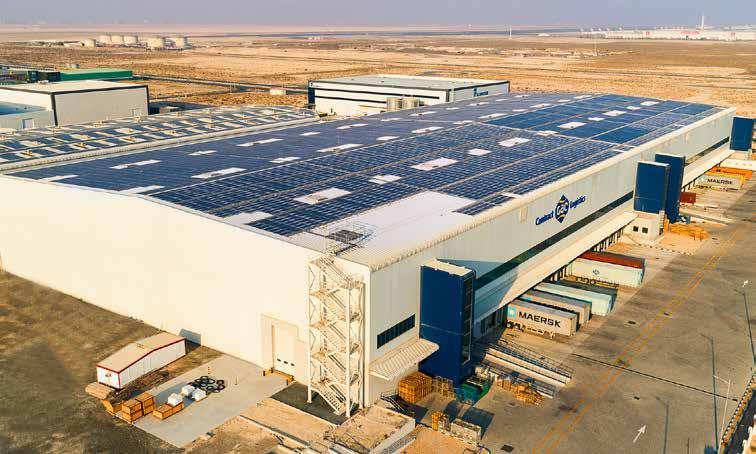
Situated near Khalifa Port, GAC’s
operations in KIZAD gave it excellent access to transport infrastructure, including connectivity by road, sea and air, flexibility to accommodate its growing warehouse needs, and greater operational efficiency for both the company and its customers.
“Our integrated network of offices and presence in multiple free zones enable us to meet both local and regional requirements while offering critical operational and costeffective advantages for our customers,” shared Nystrom.
Third-party logistics providers play a major role in the success of free zones, offering experience, knowledge and operational efficiencies to support customers using the region for transshipment or storage operations.
“Customers look to us not just as a thirdparty logistics service provider, but also as a consultant that can help optimise supply chain costs, operations and efficiencies,” observed Nystrom.
For third-party logistics providers, one of the key benefits of operating in free zones is economy of scale. GAC’s massive infrastructure, storage capacity and efficient operations have enabled it to offer customers better rates and transportation links. GAC’s offices across the region are carefully intertwined to take advantage of
regional and local distribution networks.
“We have customers who use our Jebel Ali facilities as a regional distribution centre, along with our Qatar and Bahrain facilities as local distribution facilities closer to their market. That approach is critical for certain businesses such as retail and FMCG which requires goods to be mobilised and delivered to stores in a speedy fashion,” said Peiris.
Operations in free zones continue to influence not just existing logistics services amid competitive and challenging market conditions, but also future logistics operations in the Gulf.
“We always believe that what we did yesterday and what we are doing today are not necessarily good enough for tomorrow. That is why we are always re-strategising and getting ready for the future by continuously evaluating our processes and looking for ways to optimise efficiencies, including how we operate in free zones,” stressed Nystrom.
Just like other industries, logistics providers must stay nimble in adapting to trends and providing effective operations amid changing global circumstances. And in the Middle East, free zones remain a key pillar of economic development, and could well shape logistics operations for decades to come.
19 - 20 December 2023


Riyadh International Convention & Exhibition Center (RICEC), Riyadh, Saudi Arabia
SAUDI ARABIA leads regional aviation development with a vision to triple airport capacity by 2030, linking passengers across 250+ destinations. Investment in transport related projects exceeds U$130 billion, including the new King Salman International Airport, with a 120 million passengers capacity by 2030 and 185 million by 2050 and the US$39 billion new national carrier, Riyadh International Airlines (RIA).
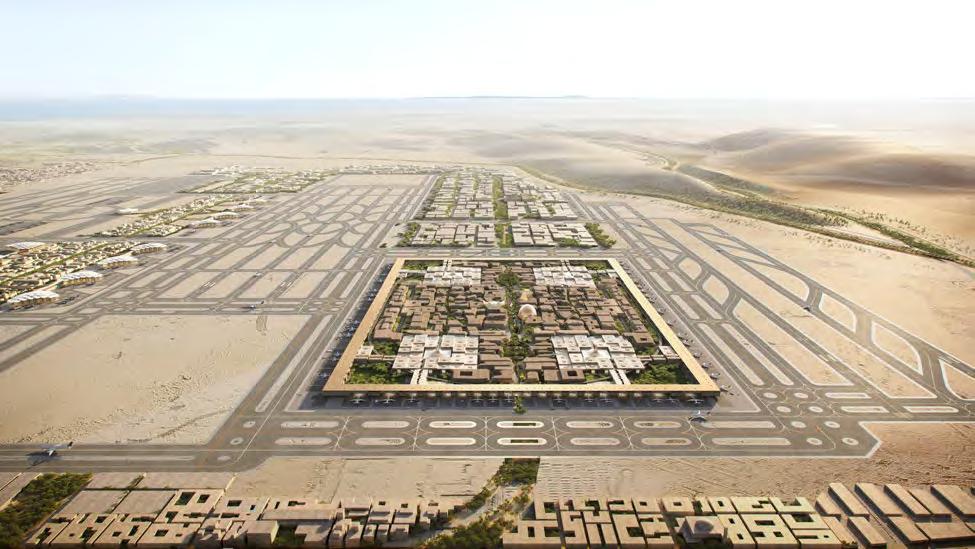
Be part of the Middle East's Largest Aviation Developments at Saudi Airport Exhibition.

5000+ International Visitors
200+ Global Exhibitors
200+ Regional Buyers
500+ Delegates
50+ Participating Countries
n AD Ports Group recently announced that it has completed the acquisition of Noatum, a global integrated logistics services provider with a presence across 26 countries, after receiving approvals from all relevant regulatory bodies.
AD Ports Group received the final approval from Spanish Authorities, after it attained regulatory clearance from the European Commission earlier in the year. Full consolidation of Noatum has started since the day of signing on 30 June 2023.
n Al Masaood Commercial Vehicles and Equipment (CV&E) has further strengthened its partnership with Lavajet by providing a fleet of 134 UD Trucks to enhance the waste management sector in Al Ain region. The division, which is part of Al Masaood Group, is the sole distributor of UD Trucks in Abu Dhabi.
As part of the new contract, Euro 5 versions of Quester and Croner trucks will soon operate in Al Ain region. These UD trucks are equipped with features designed to reduce their environmental impact, increase efficiency and uptime, improve profitability, and optimise the Total Cost of Ownership (TCO).
“These new vehicles, with their advanced features, will significantly reduce the environmental impact of waste management and promote sustainable practices,” emphasized
Mohammad El Zeftawi, General Manager, Al Masaood CV&E.“By leveraging advanced technology and safety features, we will enhance the efficiency and safety of our waste management operations, contributing to a cleaner Al Ain City,” stated Elie Salem, Area Manager, Lavajet.
The UD Trucks Quester comes with an automated transmission, whereas the UD Trucks Croner is furnished with an automatic transmission. Along with the newest advanced driver display, both trucks highlight a variety of other innovative features, including an advanced body builder module control unit and flexible chassis for all waste management applications.
“UD Trucks now offers the best Euro 5 value proposition for the waste management segment, solidifying our leadership position in the UAE and the GCC region,” remarked Mourad Hedna, President, UD Trucks MENA.

The milestone and transformative acquisition bring together two major industry players, each with its strengths and capabilities, to form a global powerhouse in the trade and logistics space.
Given its significant scope of services, experience, and capabilities, Noatum will assume leadership of AD Ports Group’s Logistics Cluster, with the process of integrating its businesses and team of 2,800 professionals into the Cluster’s operations commencing immediately.
“The future of trade and logistics relies on integration, resilience and innovation, and by taking this transformative step together we are charting a path to realizing our collective mission of becoming one of the top global trade and logistics providers,” commented Captain Mohamed Juma Al Shamisi, Managing Director and Group CEO, AD Ports Group.
Combining its maritime, ports and logistics businesses, Noatum operates a comprehensive portfolio of trade and logistics services, with a presence in 26 countries, alongside a comprehensive network of its 143 international offices.
“Today, as part of AD Ports Group, these objectives are more meaningful than ever, as together we are going to build one of the most robust logistics companies in the world,” remarked Antonio Campoy, CEO, Noatum.
“By leveraging advanced technology and safety features, we will enhance the efficiency and safety of our waste management operations, contributing to a cleaner Al Ain City” – Elie Salem, Area Manager, Lavajet
n Swisslog, leaders in data-driven & robotic solutions for logistics automation, recently announced the appointment of Rami Younes as the new General Manager and Head of Sales for Swisslog Middle East.
In his new position, Rami will be responsible for leading Swisslog’s business in the Middle East, with a primary focus on warehouse logistics. Working closely with Swisslog’s local and global senior management teams, he will identify and pursue new growth opportunities, while also delivering industry-specific automation solutions to companies in the region to help improve their operational efficiencies.
Prior to joining Swisslog Middle East, Rami was the Chief Operating Officer, ALS Logistics Solutions and successfully led a 4PL Logistics start-up in Saudi Arabia. Rami’s leadership skills in supply chain, logistics, and high-tech industrial products have consistently driven success for international teams, according to a corporate press release.

“Rami brings a strong customer-driven focus to his role and a deep understanding of the warehouse automation industry,” commented Jens Schmale, CEO, Swisslog EMEA.
“I look forward to working closely with the team to expand our portfolio of integrated automation solutions, catering to customers in the region. We will work together to execute our vision of establishing Swisslog as the frontrunner in data-driven robotic intralogistics automation,” remarked Rami on his appointment.
n Saudia Cargo has recently signed a strategic agreement with Jan de Rijk Co., a prominent European transportation and logistics company, to enhance its services and expand its reach in Europe. The signing ceremony took place at the Saudia Headquarters in Jeddah, solidifying the collaboration between the two industry leaders.
Under this agreement, Saudia Cargo will leverage Jan de Rijk’s extensive trucking network, which comprises a fleet of specialist vehicles, to bolster its operations and strengthen its presence in Europe. Jan de Rijk Co., founded in 1971, is a top provider of European transportation, distribution services, and supply chain management solutions.
The company’s expertise and indepth knowledge of key industries make it an ideal partner for furthering Saudia Cargo’s ambitious expansion plans, a press statement said.
Saudia Cargo’s collaboration with Jan de Rijk Co. marks a significant milestone in its growth strategy, enabling it to tap into new opportunities and further build up its
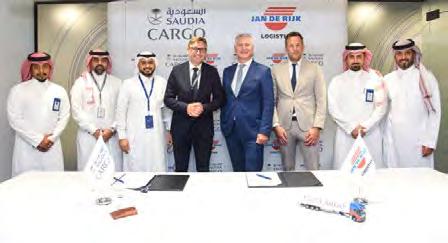
European operations. Saudia Cargo aims to enhance its service offerings and deliver seamless end-to-end logistics solutions to its customers by utilizing Jan de Rijk’s extensive network and specialist vehicles.
“We are delighted to partner with Jan de Rijk Co. to extend our footprint in Europe and provide enhanced logistics services to our valuable customers,” noted Teddy Zebitz,
“This agreement with Saudia Cargo presents a remarkable opportunity for both organizations. By combining our strengths, we will unlock new avenues for growth and better serve our customers. We look forward to a fruitful partnership and its mutual benefits,” asserted Fred Westdijk, CEO, Jan de Rijk Co.
n Khalifa Economic Zones Abu Dhabi - KEZAD Group, recently announced that it has signed an agreement with its client Global Fluorine Chemical Factory LLC (GFCF) for the establishment of its phase two in KEZAD Mussafah, which will allow the company to triple its production capacity.

In addition to the 100,000sqm that GCFC currently occupies at KEZAD Musaffah, the company will invest over US$ 272.25mn (AED 1bn) in the new facility on an adjacent plot, that spans an additional 120,000sqm.
The agreement, signed in the presence of His Excellency Dr. Sultan Al Jaber, Minister of Industry and Advanced Technology (MoIAT), and Captain Mohamed Juma Al Shamisi, Managing Director and Group CEO, AD Ports Group, demonstrates MoIAT’s dedication to strengthening supply chains’ localisation and resilience in line with ‘Operation 300 billion’.
“This agreement highlights
the opportunities available to any organisation and adds significant value to the UAE’s manufacturing sector in keeping with the vision of our wise leadership,” stated Abdullah al Hameli, CEO Economic Cities & Free Zones, AD Ports Group.

n Etihad Cargo has appointed Wallenborn Transports as its road feeder service (RFS) partner for Europe to expand its scheduled and specialised services across 27 countries, facilitating the transportation of cargo between Etihad Cargo’s main European gateways, including Amsterdam, Paris and Frankfurt, and offline stations.
“Providing seamless connectivity between Etihad Cargo’s European main freighter gateways and offline destinations is essential to meeting the carrier’s delivery promises,” stated Thomas Schürmann, Head of Cargo Operations and Delivery, Etihad Cargo.
“This partnership will give Etihad Cargo’s customers access to a comprehensive network connecting over 90 airports and a range of specialised logistics solutions, such as GDP-validated transport for temperaturesensitive healthcare products,” asserted Frantz Wallenborn, President & CEO, Wallenborn Group.
Etihad Cargo has entered into strategic partnerships with RFS providers around the world to bolster its operational footprint
“This integrated unit allows our factory to be in complete control of our value chain while being able to leverage KEZAD’s versatile platform that enables high-end manufacturing,” remarked Haojjin Shi, CEO, Global Fluorine Chemical Factory.



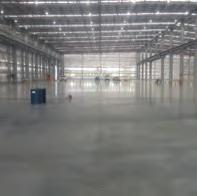
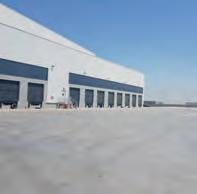




n Qatar Airways Cargo announced its latest achievement, the IATA Centre of Excellence for Independent Validators in Perishable Logistics (CEIV Fresh) certification.
With this certification, the cargo carrier reinforces its position as a reliable partner for customers seeking safe and efficient transportation solutions for perishable cargo.
The IATA CEIV Fresh standard encompasses the entire supply chain, including both operational and technical aspects, ensuring that perishable goods maintain their freshness, quality, and integrity throughout the transportation process.
This remarkable milestone not only sets a new benchmark for excellence in the industry but also establishes the cargo carrier and its ground handler in Doha as the first
and only airline worldwide with its GHA to have attained the complete suite of IATA CEIV certifications–CEIV Fresh, CEIV Lithium Batteries, CEIV Live Animals, CEIV Pharma, IEnvA registered and United for Wildlife programme.
“Qatar Airways Cargo and QAS Cargo’s achievement of the IATA CEIV Fresh certification reflects our pursuit for excellence and our unwavering commitment to our customers, keeping them always at the heart of everything we do,” commented Guillaume Halleux, Chief Officer Cargo, Qatar Airways.
“This certification is a boost to their service offerings, demonstrating efficient and high-quality handling of perishable goods.,” remarked Brendan Sullivan, IATA’s Global Head of Cargo.
n GWC has announced that it is one of the first companies in Qatar to increase the foreign investor ownership percentage in the organization’s capital to 100%.
This milestone development was achieved after receiving the approval of the special Council of Ministers session that was held in middle May 2023, a press communique stated.
“In keeping up with the Qatar National Vision 2030 and promoting economic development and diversification, we believe this advancement is a recognition of the integral role foreign investors play in Qatar’s economy,” remarked Hicham Nedjari, CFO, GWC.
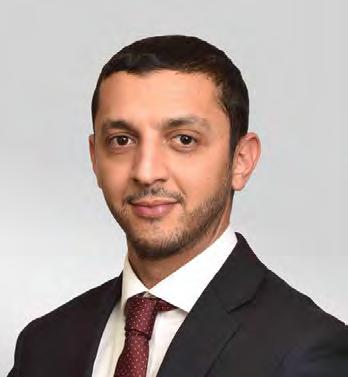
The decision to amend was approved by the Extraordinary General Assembly and the amended system was issued and published in the Official Gazette.
Gulf Warehousing Co. (GWCS) is one of the leading logistics companies in the Middle East and in less than 20 years, GWC has become a major logistics services provider in Qatar and across the region.
n Following an agreement with Germany’s Renner Kompressoren, Acme Intralog will offer oil-injected screw compressors as well as oil-free compressed air and piston compressors in the Middle East.
Designed for tough industrial applications, compressed air stations work in the most efficient and economical way, if the entire system is connected to Renner’s intelligent control and monitoring system.
Acme’s regional network of qualified professionals, can help customers who opt for Renner compressors to bring down their operating cost and make an active contribution to reducing carbon dioxide emissions at the same time, using Renner’s intelligent networking system.
“Renner compressors guarantee a costefficient steady flow of compressed air. Through our partnership with Renner, we can supply our customers with the right compressor for any application,” affirmed
Navin Narayan, CEO, Acme Intralog.
The ability to offer compressed air at various pressures makes the Renner Screw compressors one of the most reliable energy sources available. The oilinjected, belt-driven screw compressors with reliable and durable 3-point tension are designed for medium to high compressed air requirements, a press communique stated.
Wherever clean compressed air is required, for example in the food and
beverage industry, oil-free compressors from Renner ensure high-quality results. Both their Scroll compressors and waterinjected screw compressors are ideally suited for applications with the highest standards of pure compressed air.

The range of Renner piston compressors is extensive, whether with vertical or horizontal air receiver, mobile or stationary, with or without sound insulation box, with petrol engine or as auxiliary compressor.
n ADNOC Gas recently announced the award of $1.34 billion in contracts to Petrofac Emirates LLC and the Consortium between National Petroleum Construction and C.A.T International Ltd. for the expansion of its natural gas pipeline network.
Under the sales gas pipeline network enhancement (ESTIDAMA) programme, the new pipeline will extend ADNOC Gas’ existing pipeline network from approximately 3,200 kilometers (km) to over 3,500km, enabling the transportation of higher volumes of natural gas to customers in the Northern emirates of the United Arab Emirates (UAE).

“The expanded pipeline will drive further growth for ADNOC Gas and our shareholders as we deliver on our mandate to achieve gas self-sufficiency for the UAE,” emphasized Ahmed
As part of ADNOC’s highly successful In-Country Value (ICV) programme, which aims to enhance the UAE’s local value chain by encouraging local manufacturing and supporting local industries, over 70% of the contracts’ value is expected to flow back into the UAE economy.
The ESTIDAMA programme comprises of multiple packages, with the first one awarded in 2021 for early modification works on existing pipelines and successfully completed in 2023. The second and third packages, which are being awarded now, include the construction of new pipelines and a gas compression plant in Habshan that will help deliver essential feed gas to key customers across the Emirates.
n ADNOC Gas recently announced a 14-year supply agreement with Indian Oil Corporation Ltd (IOCL) for the export of up to 1.2 million metric tonnes per annum (mmtpa) of liquefied natural gas (LNG) to India’s largest integrated and diversified energy company.
The agreement, valued in the range of US$7bn to US$9bn (AED25.7 to AED33bn) over its 14-year term, signifies a major step forward in the partnership between the two industry leaders.
The landmark deal marks another significant milestone for ADNOC Gas as it expands its global reach, reinforcing its position as a global LNG export partner of choice, and reaffirming IOCL as its key strategic partner in the LNG market, a press statement said.
“We look forward to expanding our collaboration and take pride in the knowledge that ADNOC Gas’ LNG exports will further support the development of IOCL and contribute to
India’s growth story,” commented Ahmed Alebri, CEO, ADNOC Gas.
Under the terms of the agreement, ADNOC Gas will deliver up-to 1.2 mmtpa of LNG to IOCL in India. The
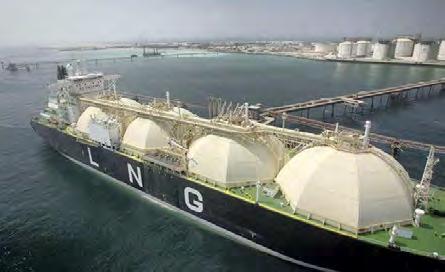
deal serves as a testament to ADNOC Gas’ ability to meet the growing global demand for LNG, a critical fuel in the energy transition, the press note concluded.
n DC Aviation Al-Futtaim has successfully completed its first 60 months maintenance check on a Bombardier Global 6000 aircraft.
The aircraft which is owned by a private customer underwent its first heavy maintenance check at DCAF’s hangar at Al Maktoum International Airport. The maintenance inspection was the largest undertaken by the DCAF team, involving over 2,000 man-hours and adept management of several logistical challenges with the support of local and overseas partners, according to a press communique.
In addition to the comprehensive inspection, the DCAF team
provided invaluable support for various line maintenance activities, including Wheel Shop and Battery Shop requests, during the project.
“The successful completion of this complex inspection further highlights the investments we have made in expanding our capabilities, which have allowed us to provide our customers with reliable and cost-effective maintenance services,” remarked Chris Rosewarne, Maintenance Manager, DCAF.
DCAF is a joint venture between Dubai-based Al-Futtaim Group and Stuttgart-based DC Aviation Group.


BOOK YOUR SPACE TODAY
Attracting the biggest players in the aerospace, space and defence industry, Dubai Airshow 2023 is all set to be another world-class edition for the industry’s trailblazers and innovators to showcase, identify future trends and opportunities and close winning deals. www.dubaiairshow.aero
13-17 NOVEMBER 2023


DWC, DUBAI AIRSHOW SITE

Strategic partners:
Supported by:


n Etihad Cargo has launched Pharma Champions, a development programme to enhance pharmaceutical transportation expertise and customer service.
Developed as a strategic initiative, Pharma Champions is aligned with Etihad Cargo’s long-term plans and the implementation of the carrier’s cool chain masterplan, which was launched in 2020 to form the foundation of Etihad Cargo’s shared vision with Abu Dhabi to further establish the emirate as a global pharmaceutical and life sciences hub.
In recent years, Etihad Cargo has made significant improvements to its cool chain products offering, including network, operations and processes. The carrier has implemented a rigorous quality programme emphasising training and development, continuous improvements and adherence to high standards across the organisation, the carrier said in a press statement.
Etihad Cargo has focused on continuous improvement, product enhancements and
expanding the carrier’s network, which now serves over 62 destinations worldwide. To strengthen connections between Abu Dhabi and the rest of the world, Etihad Cargo has developed over 1,330 IATA CEIV Pharma and GDP-certified trade lanes, ensuring product integrity during transportation.
Pharma Champions was developed proactively by Etihad Cargo’s business development, learning and development,



n Emirates Post Group Company (EPG) in collaboration with the Ministry of Education and various technology partners, is inviting all university and college students with a passion for innovation and robotics to participate in their inaugural “Logistics Unleashed” competition.
The competition, conducted as an educational programme, is the Group’s first annual robotics competition aimed at bridging the gap between academia and industry. The Group launches its inaugural annual robotics competition to boost students’ interest in logistics and advance their technical skills.
The Ministry of Education will invite students with robotics and programming skills to participate in EPG’s innovative program by registering their interest through a dedicated link.
Three teams, comprised of two to four students, with at least one Emirati national, will be selected to build a robot as a solution to the competition’s case study. EPG will provide each participating group
with AED 5000 (US$ 1362) for purchasing the necessary materials, empowering the teams to bring their innovative ideas to life.
A distinguishing factor of the competition is the accompanying educational program that will run from September to November. Participating
and operations support teams to enhance local expertise, benefiting the carrier’s customers and partners with improved service levels.
“Etihad Cargo has developed and launched Pharma Champions to enhance the carrier’s capabilities in transporting high-value, temperature-sensitive pharmaceuticals across its global network,” stated Tim Isik, Vice President Commercial, Etihad Cargo.
students will visit EPG’s facilities, including the sorting centre and retail branches, as well as the headquarters of the participating technology partners to gain first-hand insights into the logistics industry and the potential technological advancements that can be incorporated.
n Emirates Delivers, the e-commerce delivery platform of Emirates SkyCargo, has launched in Kuwait, facilitating fast, reliable, and cost-effective international delivery of items purchased from the UK and the US to shoppers in Kuwait, according to a press release.
Emirates Delivers provides a seamless door-to-door transport solution with competitive shipping rates to bring customers the best e-commerce purchases from the UK and the US.
“Leveraging Emirates’ global network, the frequency of flights, our wide body capacity, and the trust and longstanding relationships we’ve built with consumers in market, Emirates Delivers is well placed to answer this need,” remarked Nabil Sultan, Divisional Senior Vice President, Emirates SkyCargo.
With free storage of up to 30 days, Emirates Delivers allows customers to combine items from different retailers and vendors and consolidate their purchases into one package to further reduce the already-competitive shipping costs.
Using the ‘My Suite’ option on the Emirates Delivers website, customers can then confirm shipping to Kuwait, with full tracking visibility from the time the items are received at the facility, through to delivery of the package at their door.

n Doha’s Hamad International Airport (DOH) continues its impressive growth in passenger traffic as it records promising numbers in the first half of 2023. The awardwinning airport has witnessed an influx of travelers flying to and from Doha with a recorded 33.5% increase in passenger traffic and 18.1% increase in aircraft movements from the same period last year, according to a recent press communique.
The airport saw a total of 20,775,087 passengers during the first half of 2023–moving 10,315,695 passengers in the first quarter of the year and a further 10,459,392 in the second quarter. Aircraft movements during the first half of 2023 also increased compared to last year, with a total of 116,296 arriving and departing from the airport–56,417 in the first quarter of 2023 and 59,879 in the second quarter.
During the first half of 2023, Hamad International Airport handled 1,121,382 tonnes of cargo and moved 17,596,776 bags, including 11,376,483 transfer bags through its facility.
Hamad International Airport’s commitment to investing in the latest technologies has allowed it to implement advanced screening technology to reduce processing time and enhance security within the facility.
“We are pleased to witness a surge in
passenger traffic during the first half of this year. Our unwavering focus on enhancing our operations and investing in growth strategies has allowed us to augment
our airport infrastructure and expand our product offerings,” commented Engr. Badr Mohammad Al Meer, Chief Operating Officer, Hamad International Airport (HIA).

n Dubai-headquartered Tristar Group recorded a sizable 78.3 per cent increase in consolidated revenues to US$ 554mn while EBITDA was up 33.1 per cent to US$ 101mn as of June 2023.
All business segments are growing at the pace of two digits, with the Fuel Farm Segment in particular, recording a big growth due to the contribution of the recently acquired HG Storage International in partnership with Glencore.
“The acquisition of 51 per cent ownership stake in HG Storage International, finalized in August 2022, strong Maritime market, and the good performance of Road Transport Segment (+ 23% Year on Year), are the main reasons for the strong performance recorded in the first six months of this year,” commented Eugene Mayne, Group CEO, Tristar.
“We are confident that the second half of 2023, will not only confirm the record growth of our Group, but I do believe that, thanks to the numerous
initiatives put in place during 2022, will fuel additional growth for the Group in the coming years,” he continued.
Tristar continues to explore entry into new markets and new products in its drive to implement reduced carbon emission initiatives across its operations.
Tristar, annually, discloses it carbon footprint through the Carbon Disclosure Project (CDP) and is a member of the
First Movers Coalition (FMC) launched by the US Government and World Economic Forum (WEF) with pledge to purchase products and services that are low or near zero as possible, a press statement said.
Tristar was founded in 1998 in the UAE and today operates in 29 countries across the world, the press communique concluded.
n IBS Software, a global provider of SaaS solutions to the travel and cargo industry, has been selected by the air cargo unit of MSC Mediterranean Shipping Company, as a strategic partner in a bid to digitally transform its air cargo operations.
iCargo, the Software as a Service solution for air cargo management from IBS Software, will install a true digital platform that covers cargo sales, operations, cargo accounting and portal for MSC.
Once fully implemented, iCargo will enable MSC to have full visibility of its air cargo value chain, covering sales, operations and accounting, while also gaining insights for continuous business improvement, a press communiqué stated.
The partnership enables IBS Software to deploy iCargo for a company that is already the world’s largest container carrier, and which is now growing its MSC Air Cargo unit, as a complementary business to its core ocean shipping solution.
“We see great potential in IBS Software’s capabilities and solutions, through

which we expect to harness the power of digitalisation to help achieve MSC Air Cargo’s objectives,” affirmed Jannie Davel, Senior Vice President, MSC Air Cargo.
“We’re confident the iCargo solution
and the team that continuously innovates our products will take MSC’s multi-modal business model to new heights,” remarked Ashok Rajan, Head of Cargo & Logistics Solutions, IBS Software.

n SAP Concur Solutions recently announced its partnership with dnata Travel Management, a world-renowned leader in the travel industry, part of the Emirates Group, now a certified reseller of its full range of travel solutions.
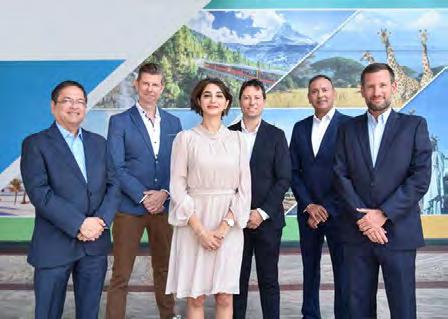
“This collaboration will enable dnata to empower its valued customers through streamlined and automated travel processes, leveraging SAP Concur’s innovative technology and state-of-theart products. These solutions automate spend management, allowing us to provide customers with enhanced value, convenience, and flexibility,” commented Savio Vaz, Vice President of Government and Corporate Travel, dnata Travel Group.
The partnership between dnata Travel Management and SAP Concur Solutions marks a significant advancement in the corporate travel sector. By combining their unique strengths and resources, both entities are well positioned to respond to changing market demands, streamline travel processes, and enhance customer
experiences, a press statement said.
“Cost control and compliance measures must be delivered while improving employee experiences - and this is where digital transformation can play a key role,” noted Gabriele Indrieri, Vice President and Managing DirectorEMEA South Region, SAP Concur.
“This partnership with dnata is a key element in delivering exceptional end-to-end services for our customers. By integrating their sector-leading travel services to support our customers’ digital transformation agendas, this collaboration enables us to deliver the best-in-class technologies,” Indrieri added.
n Saudi Arabia’s Public Investment Fund (PIF) recently announced that it has signed a Memorandum of Understanding (MoU) with the Oman Investment Authority (OIA).

The MoU is intended to expand cooperation and investment between the two entities, enabling new and promising investments in Oman’s rapidly growing economy.
The MoU also represents a significant milestone in PIF’s and OIA’s strategic partnership as it aims to expand PIF’s portfolio in Oman, building on the recent establishment of the Saudi Omani Investment Company (SOIC), a PIF-wholly owned company, which intends to invest up to USD5 billion in promising sectors in Oman.
“PIF aims to create long-term strategic partnerships in the region that support the creation of sustainable returns, deliver value to local economies, maximize PIF’s assets, and diversify the Saudi Arabian economy in line with Vision 2030,” observed Yazeed A. Al-Humied, Deputy Governor and Head of
MENA Investments, PIF.
“This MoU builds on our existing relationship with PIF and enables greater cooperation, driving economic diversification in Saudi Arabia and Oman,” noted Mulhem Basheer Al Jarf, Deputy President, Investment, OIA.
By attracting capital, championing innovation, and implementing strategic initiatives, OIA plays an instrumental role in advancing Oman’s economic growth, elevating its global competitiveness, and driving the nation toward a prosperous and resilient future.

n In efforts to support Germany’s energy transition agenda, P&O Maritime Logistics will use its Multi Carrying Vessels to transport modular units for offshore wind power stations, which will be used to build the new Wind Farm in North Sea, Germany.
Expected to commence power production in 2025, the 900-megawatt wind farm will be a key contributor to achieving Germany’s energy transition goals of fulfilling 80% of its electricity needs from renewable sources by 2030, a press communique indicated.
P&O Maritime Logistics will transport the components for a Spanish EPC company, which oversees construction of the offshore substations for the Wind Farm. Since November 2022, P&O Maritime Logistics’ MCVs has made several voyages, carrying the components from pre-fabrication yards, loaded via a shallow drafted port, in Turkey to assembly yards in Spain.
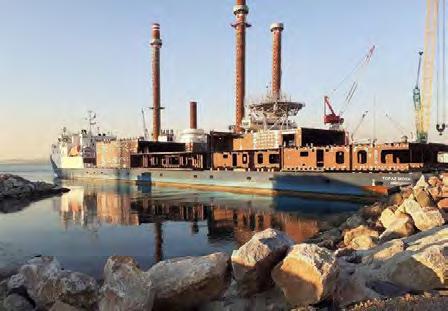
“We at P&O Maritime Logistics
feel a responsibility to facilitate the development of infrastructure that will allow the adoption and integration of renewable energies, and the Wind Farm
n BEEAH Tandeef, the waste collection and city cleaning vertical of BEEAH Group, the region’s leading sustainability and digitalisation pioneer, recently announced a monumental step towards cleaner urban environments with AI City Vision.
This groundbreaking AI 360 Camera system for waste collection vehicles, the first of its kind in the region, is set to revolutionise how cities are maintained and waste is managed.
A standout innovation, AI City Vision processes images and videos captured by 360-degree external cameras with exceptional accuracy. By recognizing conditions such as waste bin status, overflowing waste, and road cleanliness, this AI-driven technology streamlines waste management, leading to considerable time savings and smarter asset management.
“We are fully committed to aligning our solutions with the UAE’s sustainability roadmap, fostering a cleaner environment, and driving economic prosperity through technological excellence,” stressed Khaled Al
Huraimel, Group CEO, BEEAH Group.
Alongside the groundbreaking AI City Vision system, BEEAH Tandeef also introduced additional innovative solutions. With a Facial Recognition Bus Attendance system, BEEAH Tandeef’s workforce transportation buses are transforming labour management within the industry.
Equipped with real-time tracking and safety assurance mechanisms, the
is one that will undoubtedly contribute to providing Germany with low carbon power,” asserted Martin Helweg, CEO, P&O Maritime Logistics.
IoT-enabled device underscores BEEAH Tandeef’s commitment to the safety and welfare of its workforce.
“As the UAE aspires to become a global hub for innovation and a model for sustainable development, BEEAH Tandeef takes a leading role in the waste management sector by introducing cutting-edge technologies that prioritise sustainability, efficiency, and safety,” reiterated Rafael Lopez, CEO, BEEAH Tandeef.

Burlington Tower
11th Floor, Office no.1111 &1108
Business Bay
Dubai - United Arab Emirates
P.O.Box 51188
marketing-me@savoye.com
Great storage flexibility
Crates, trays and boxes mixable in the same aisle. Single- or dual-storage format, up to six deep, of shelves that can be compartmentalised into several cells. System operating in ambient temperature, refrigerated and freezing environments.
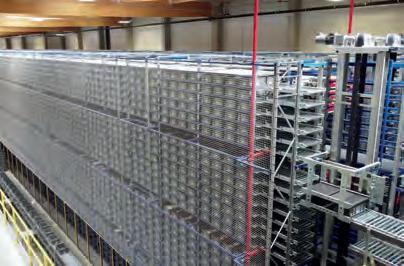
System density
Highly efficient preparation
High-speed aisles capable of achieving a combination of 1100 infeeds and outfeeds per hour. Ergonomic work stations for rates up to 900 order lines per hour.


Maximum availability
www.savoye.com



